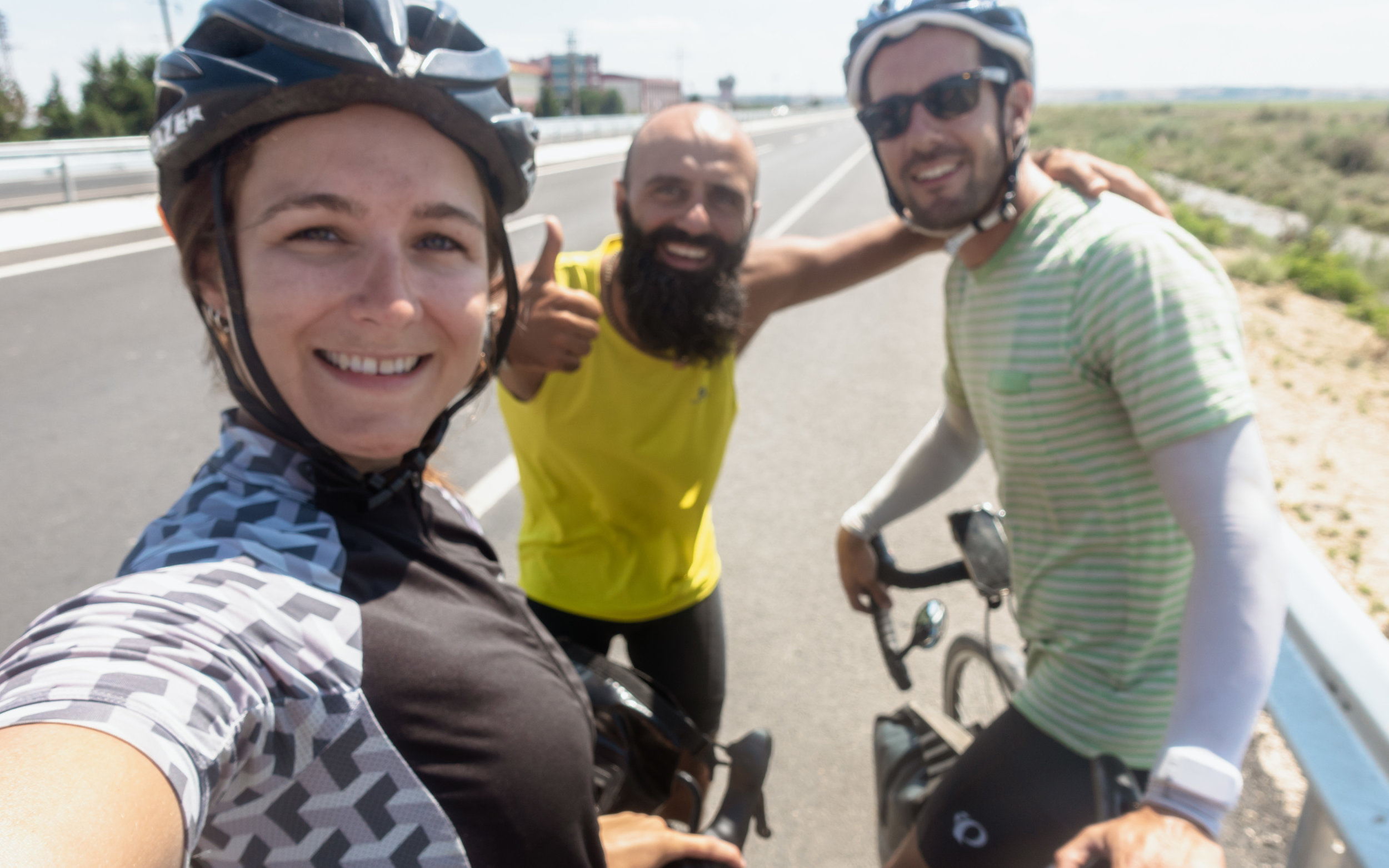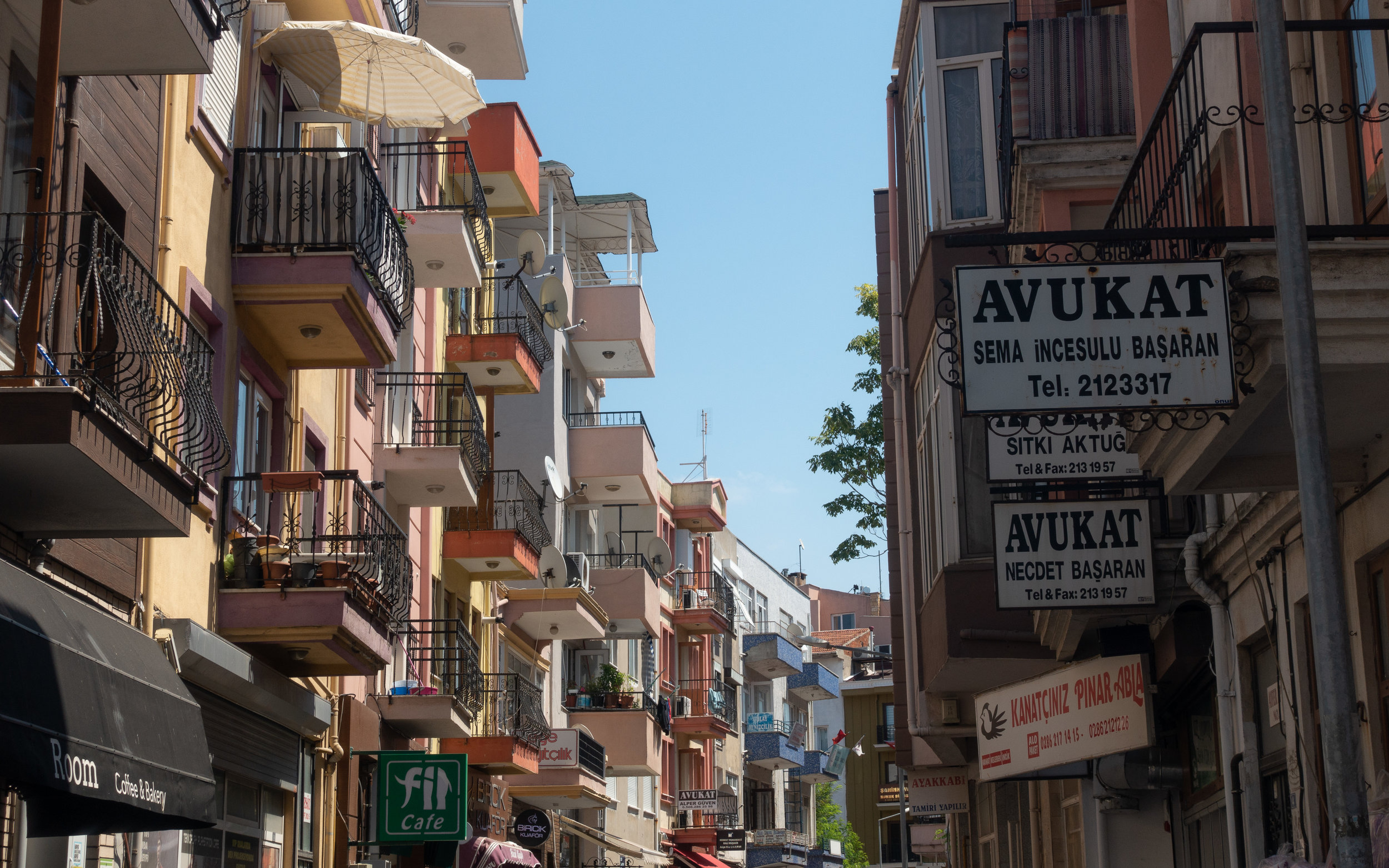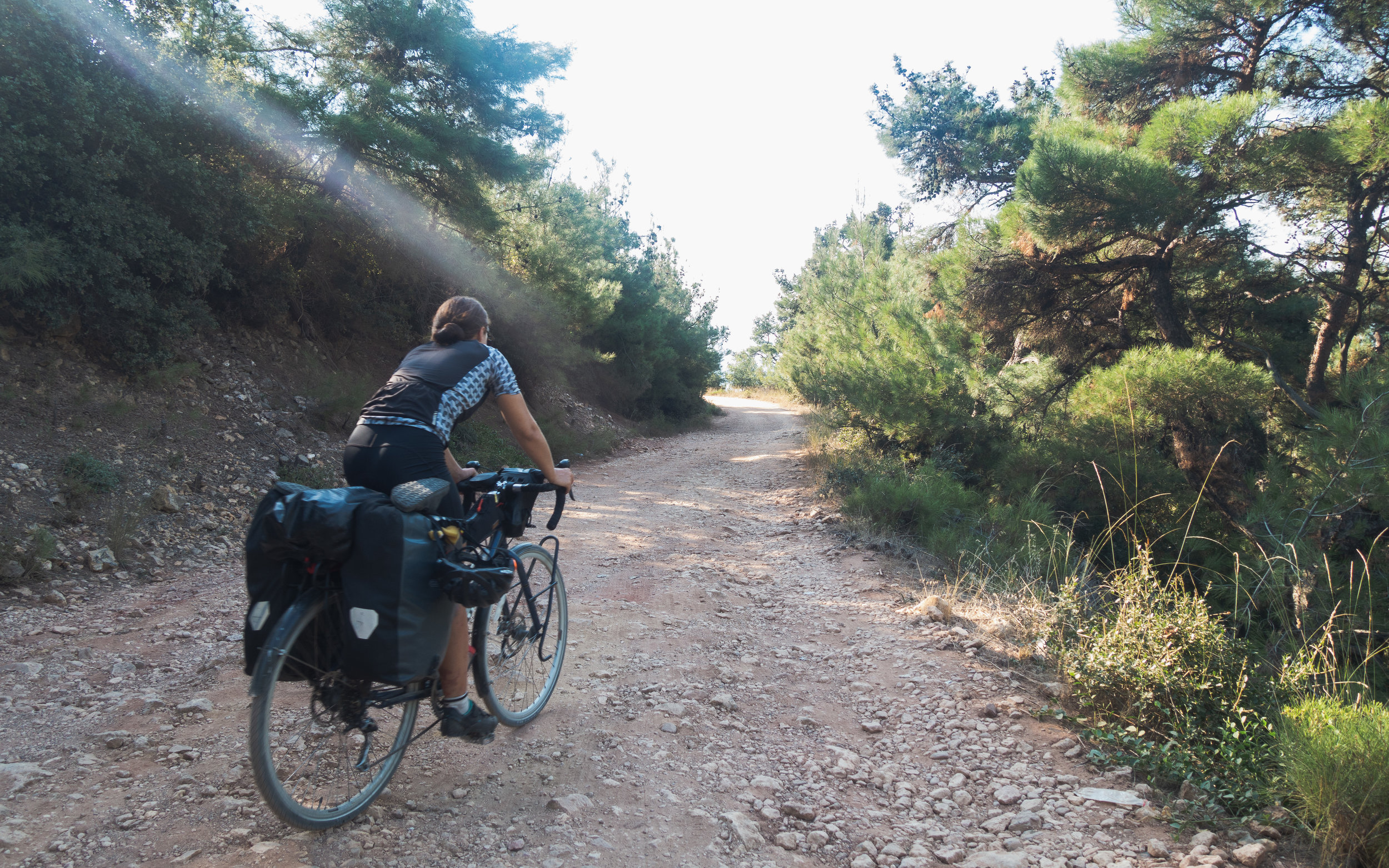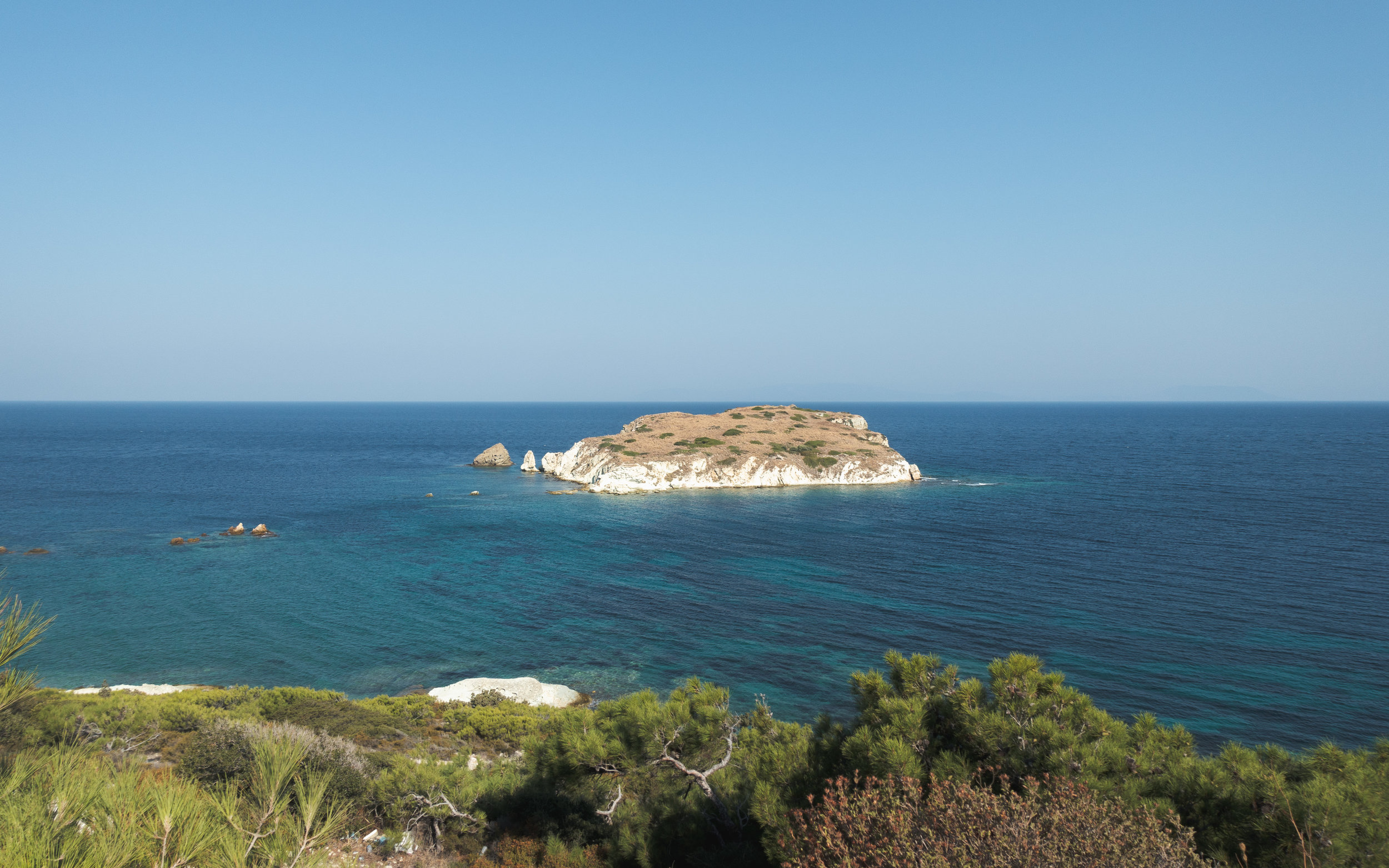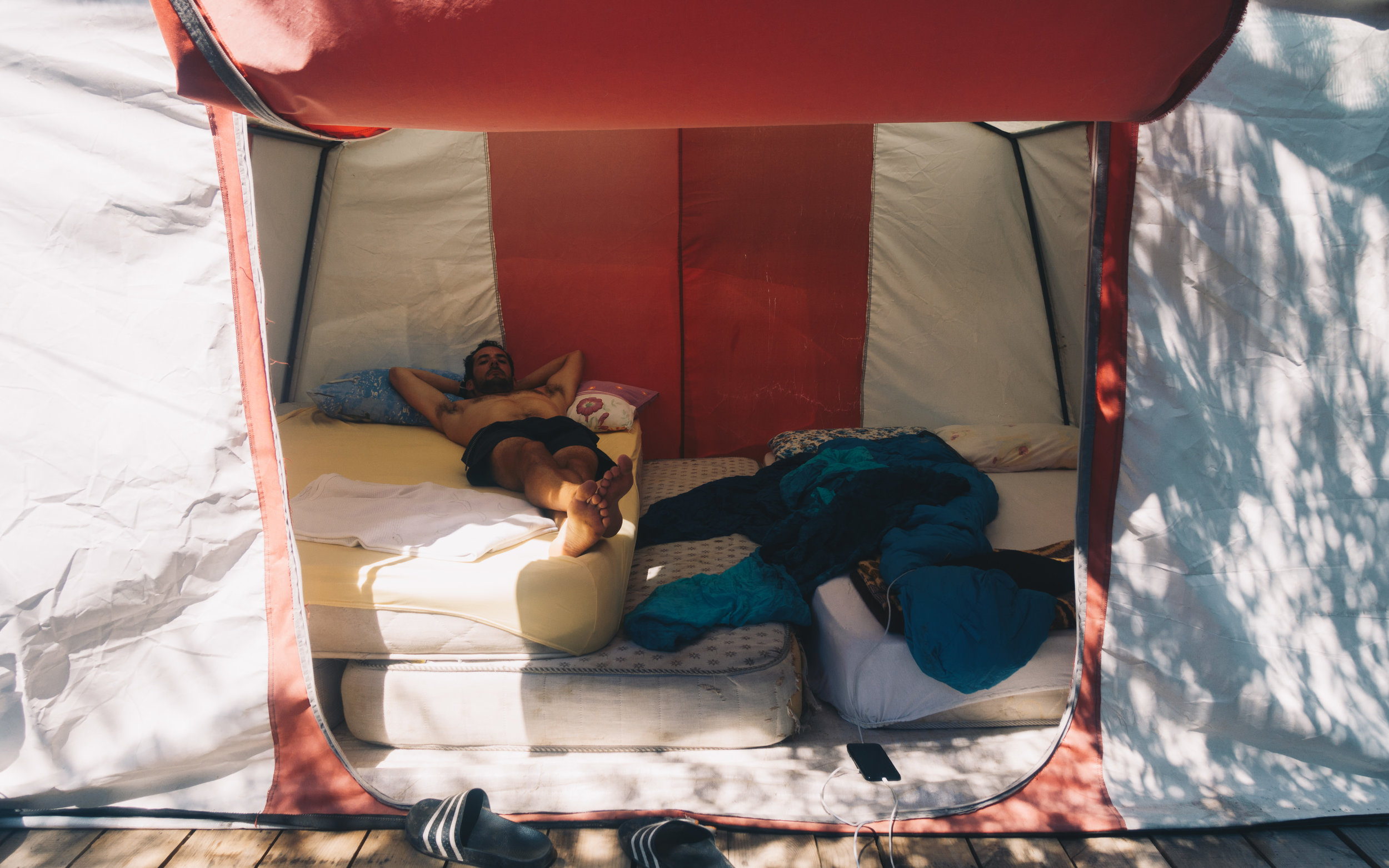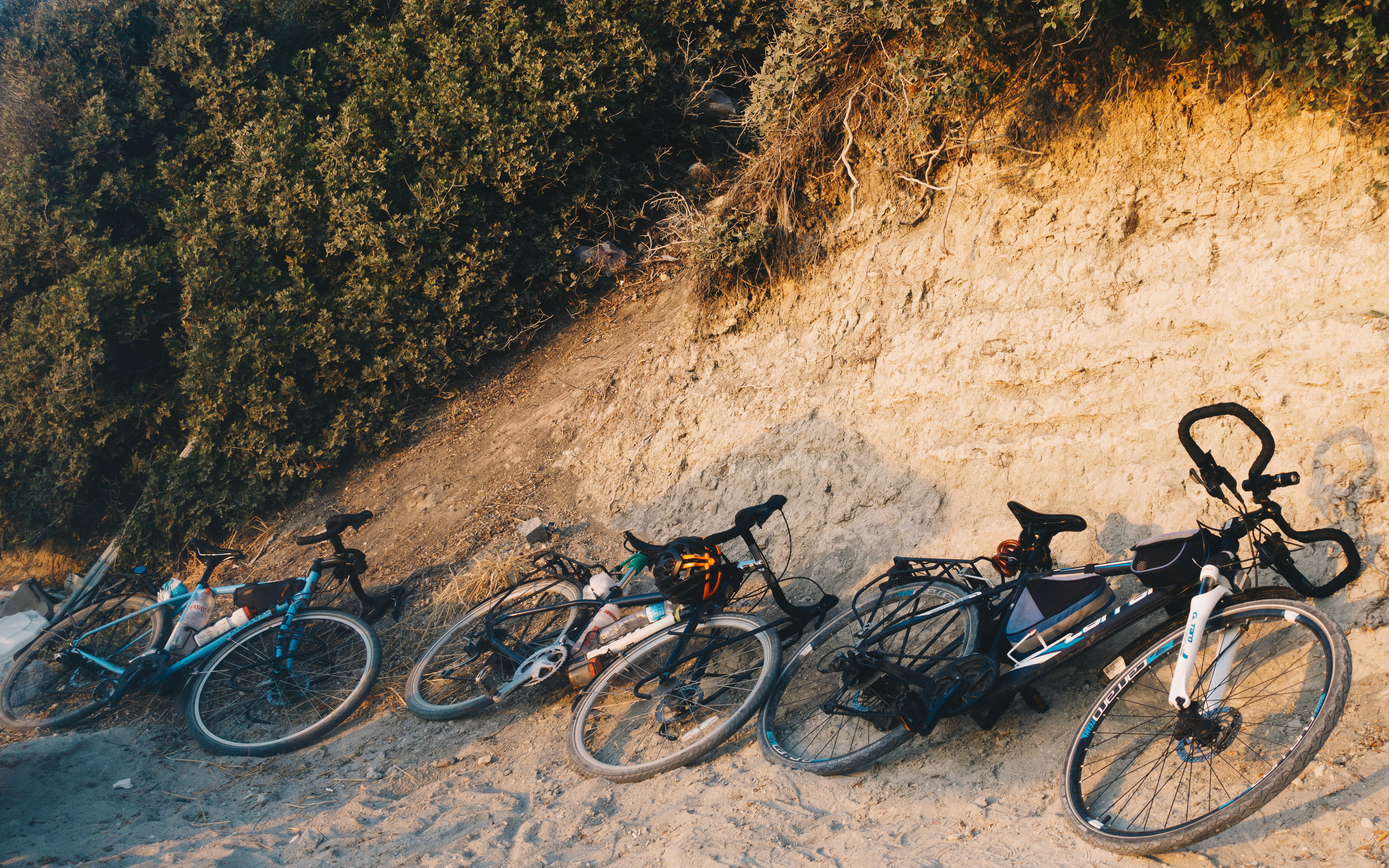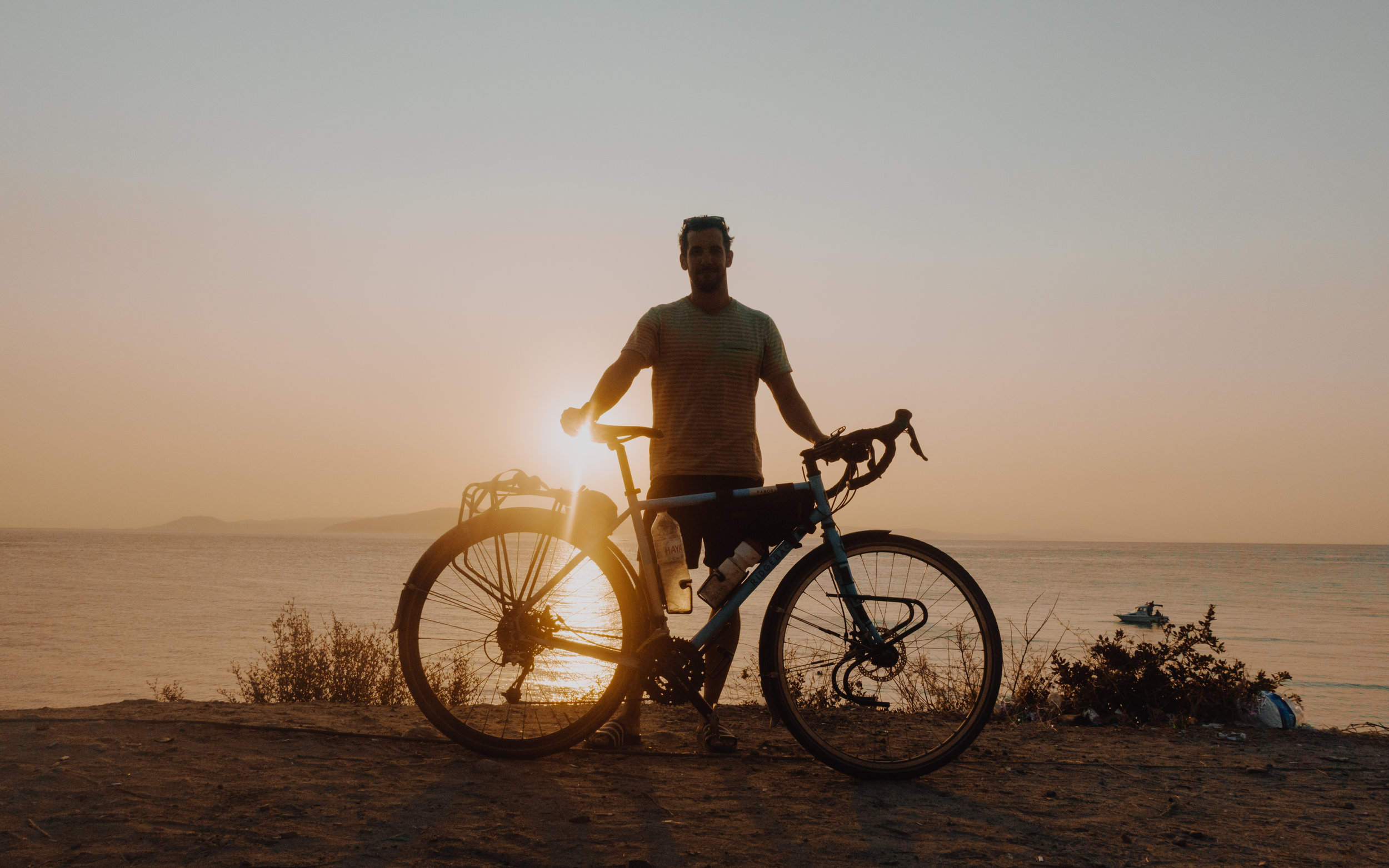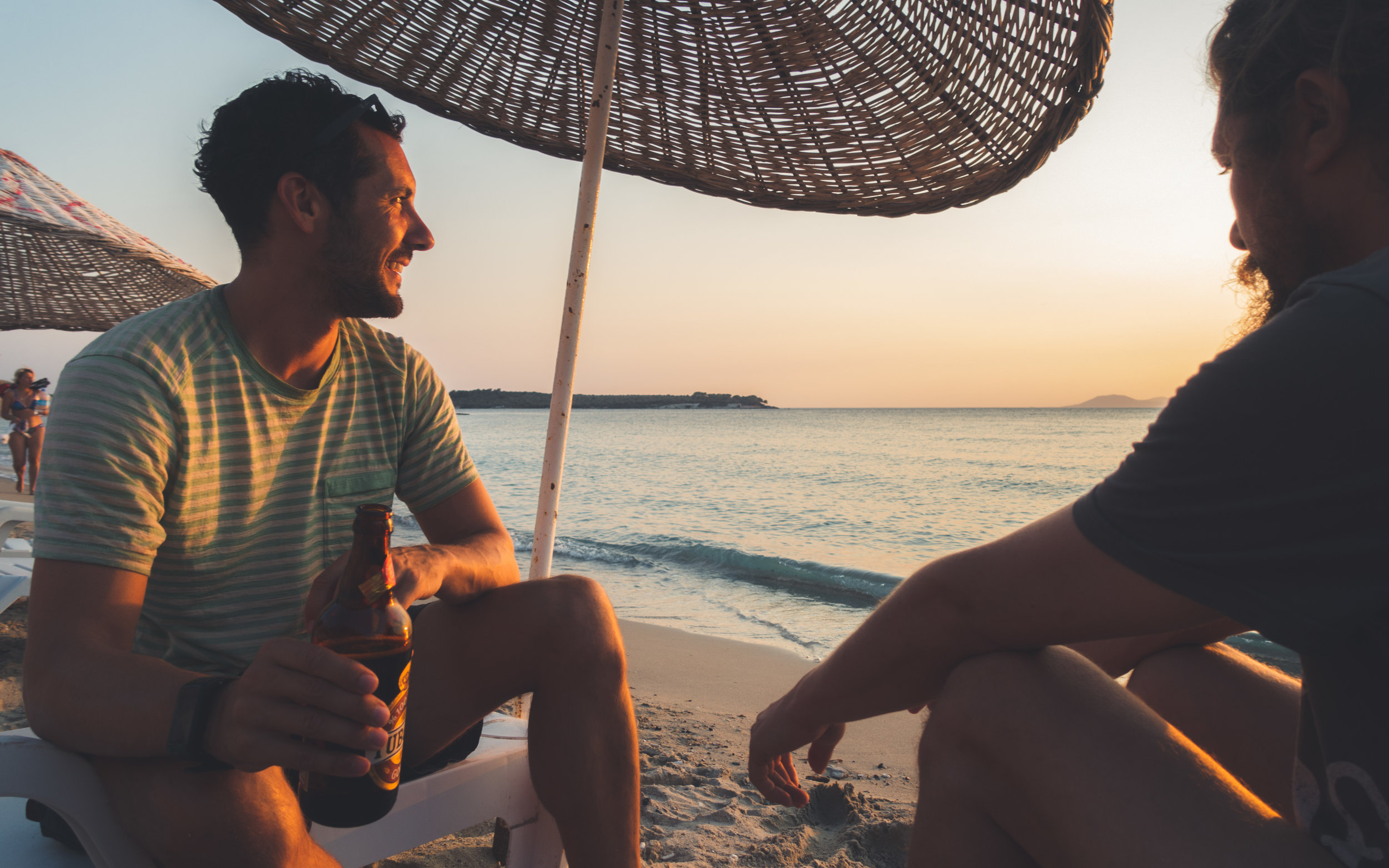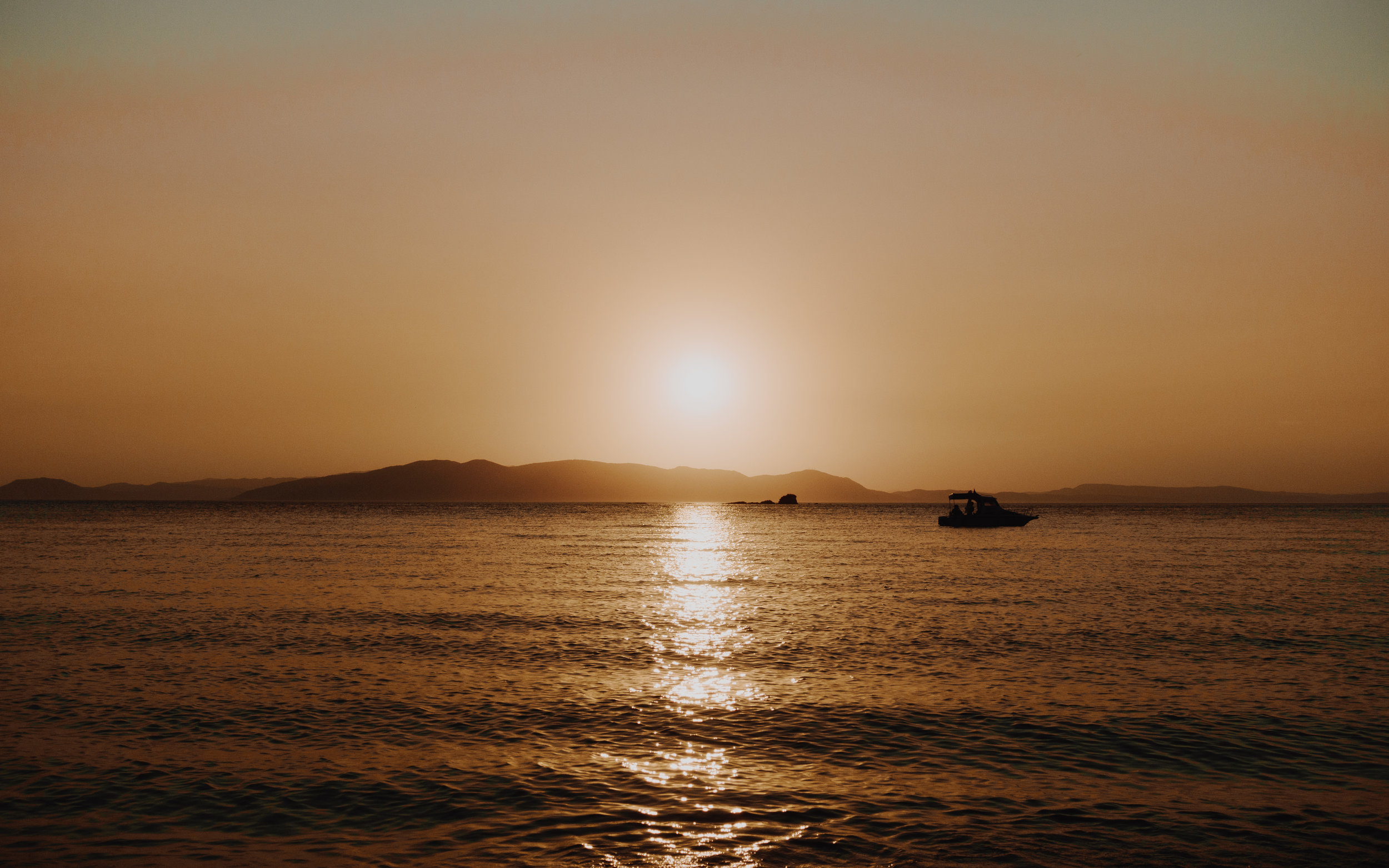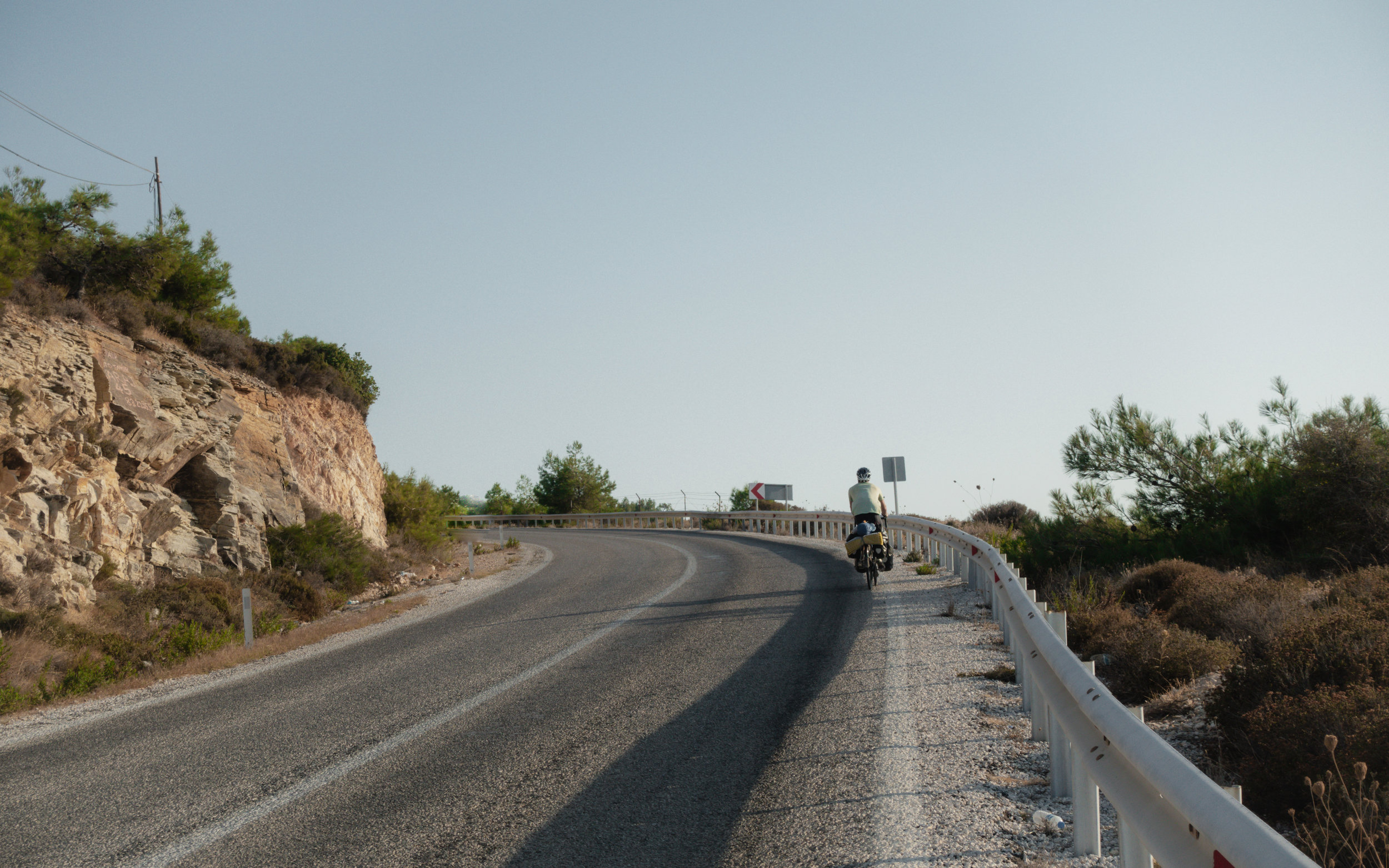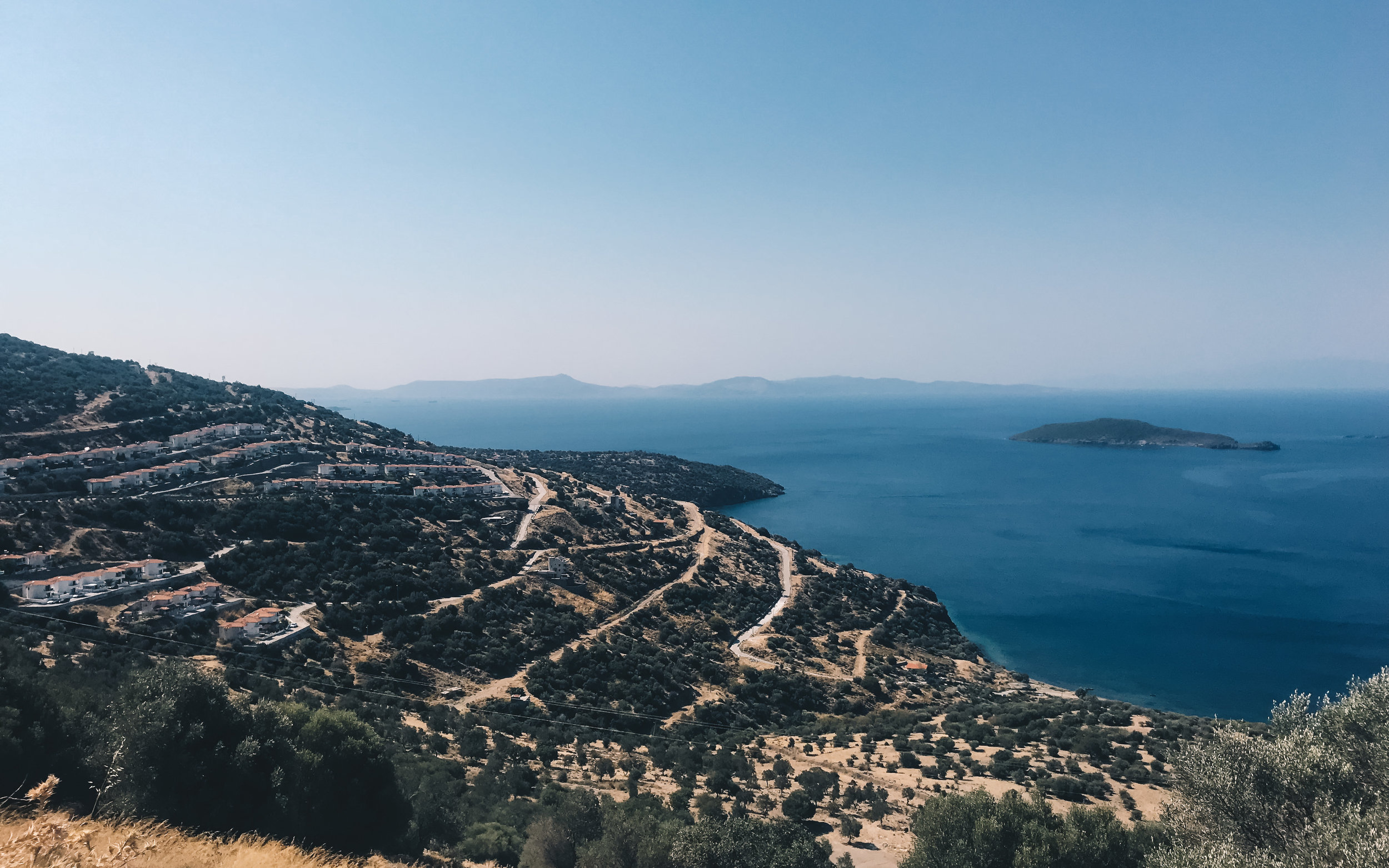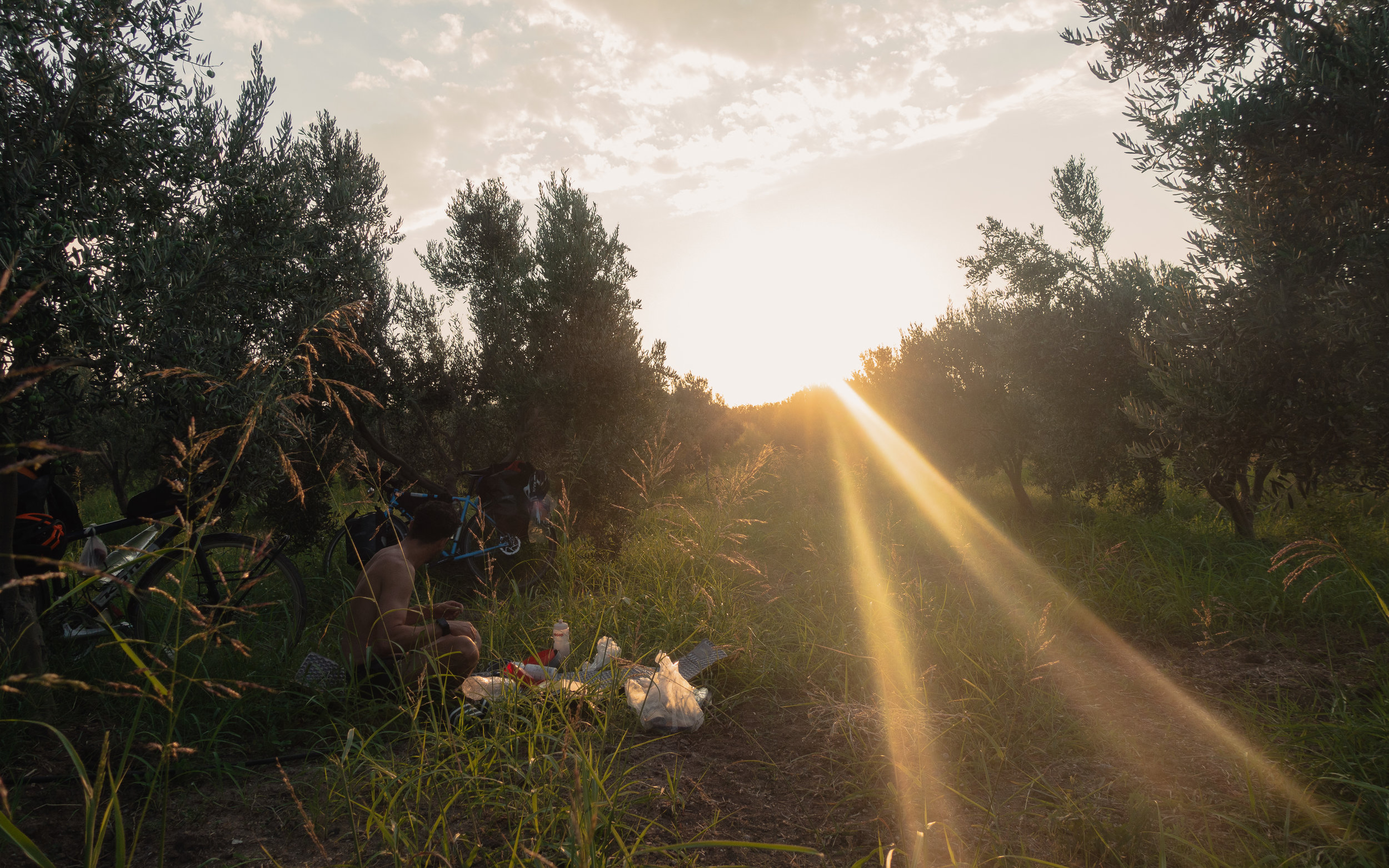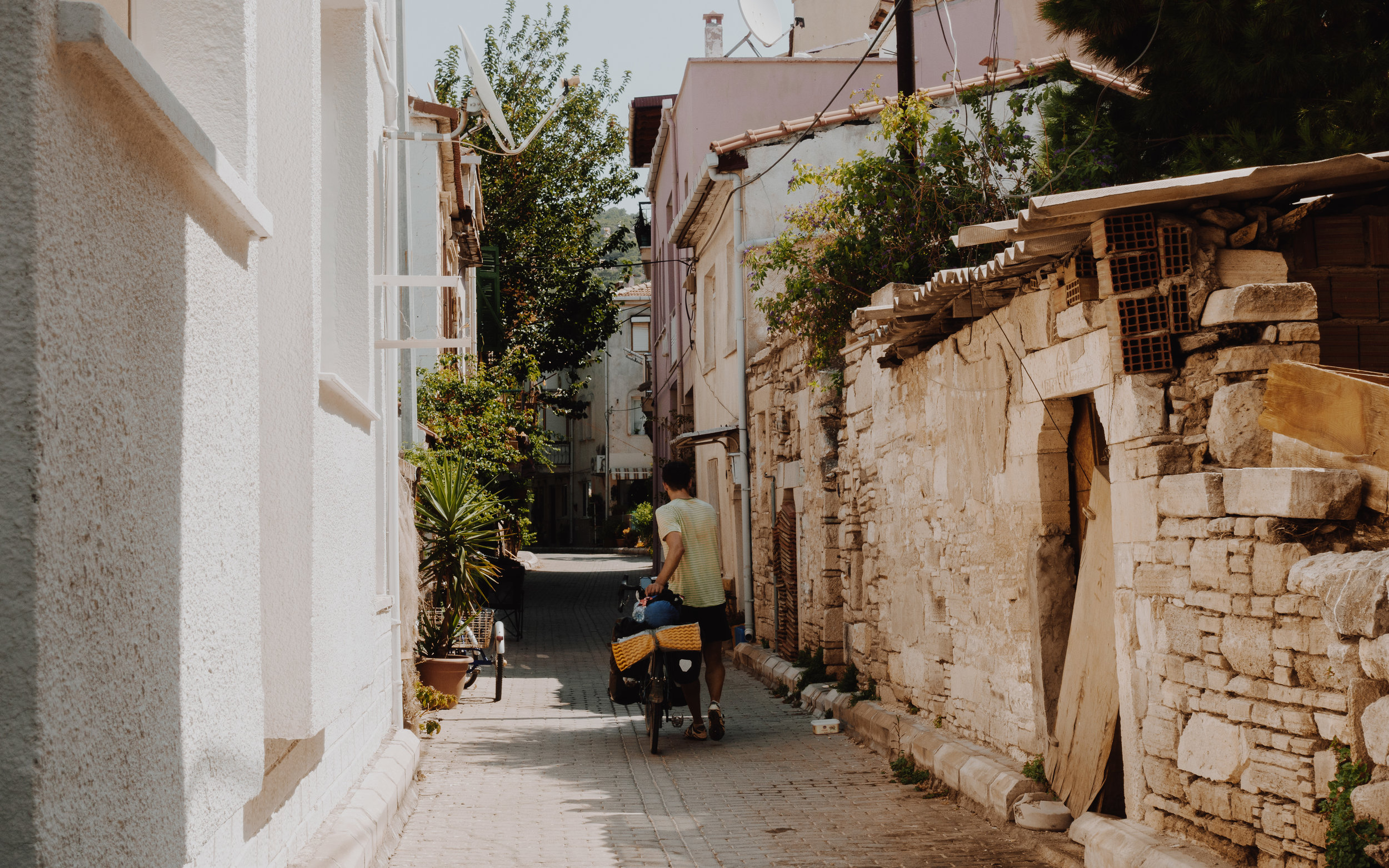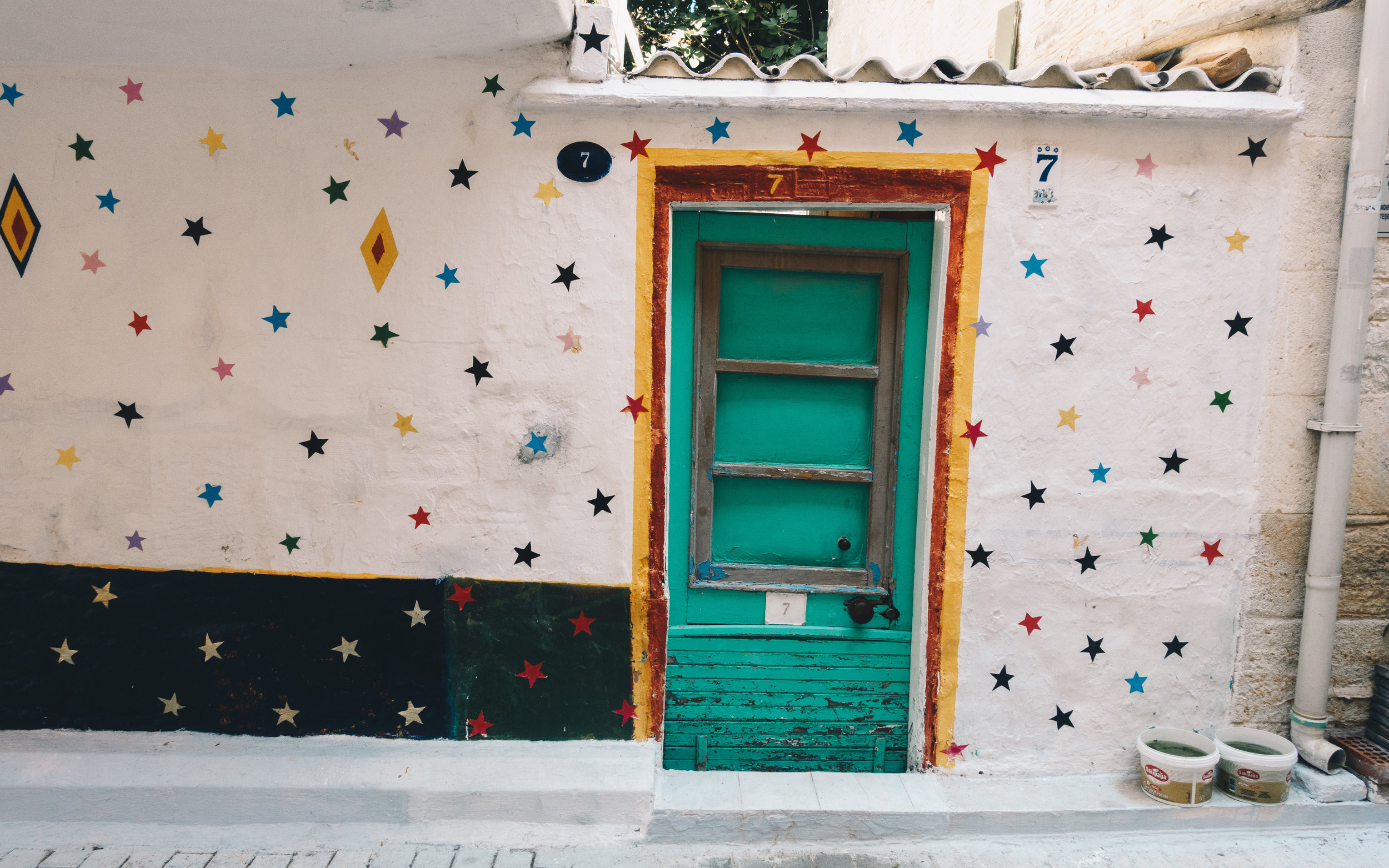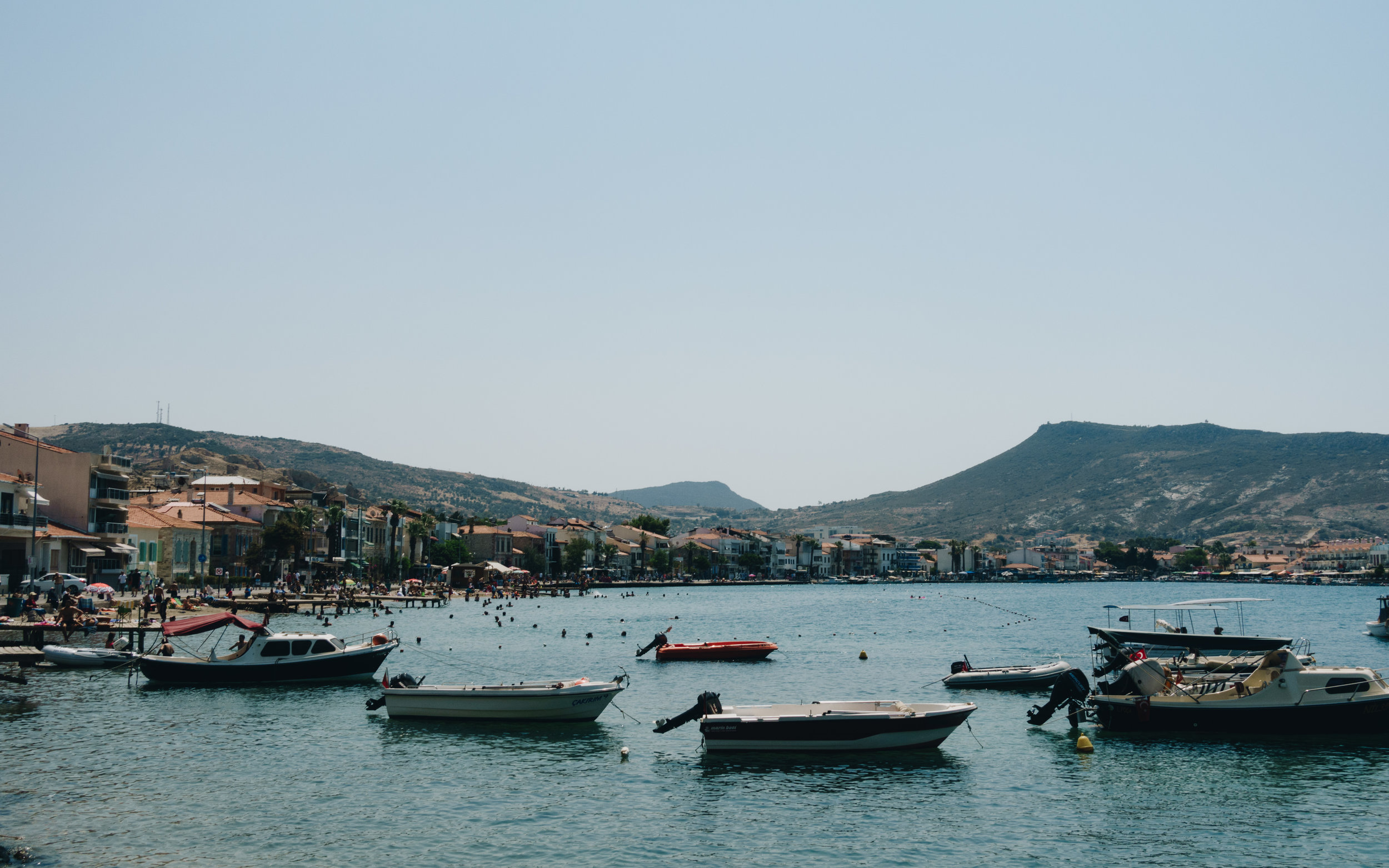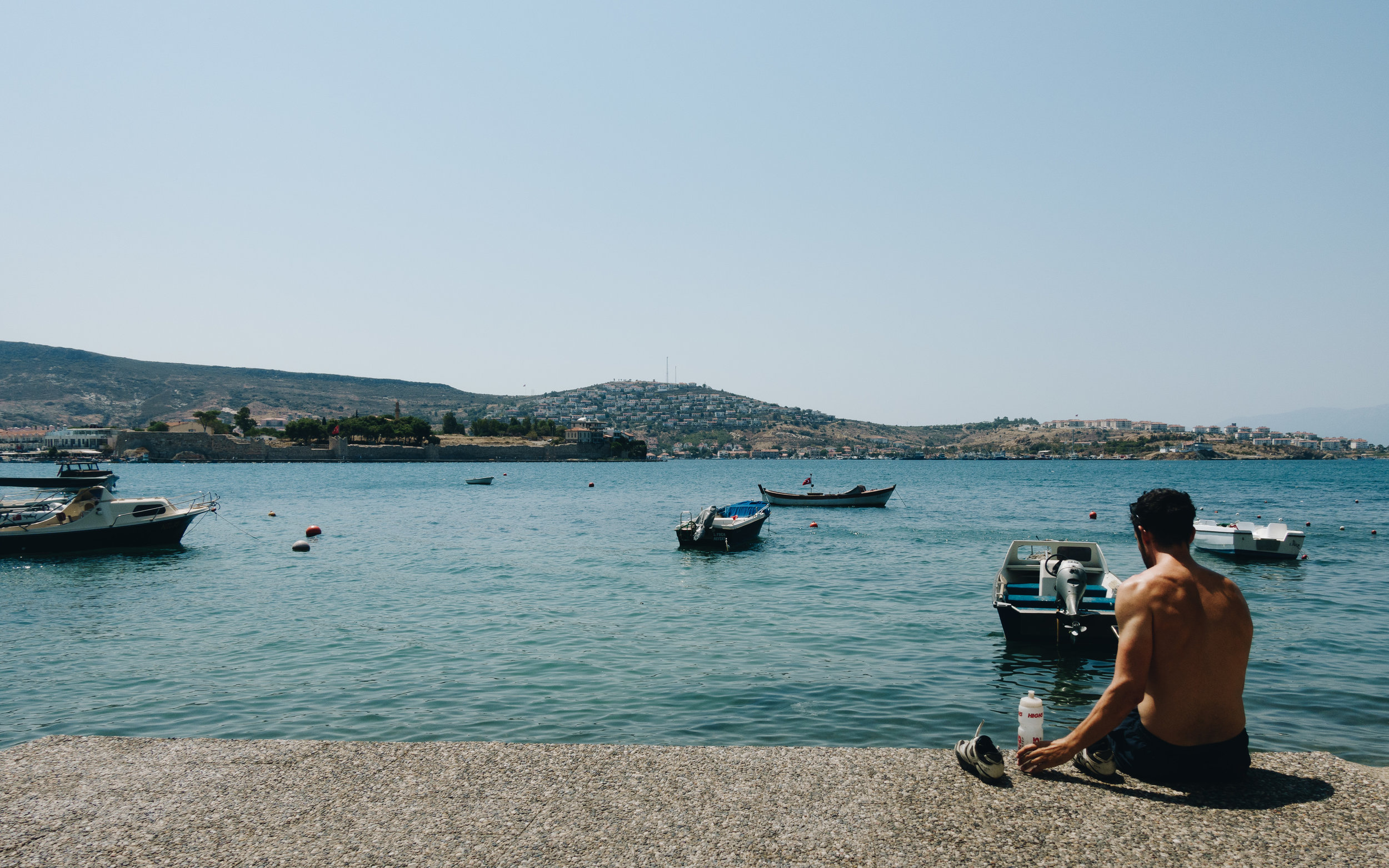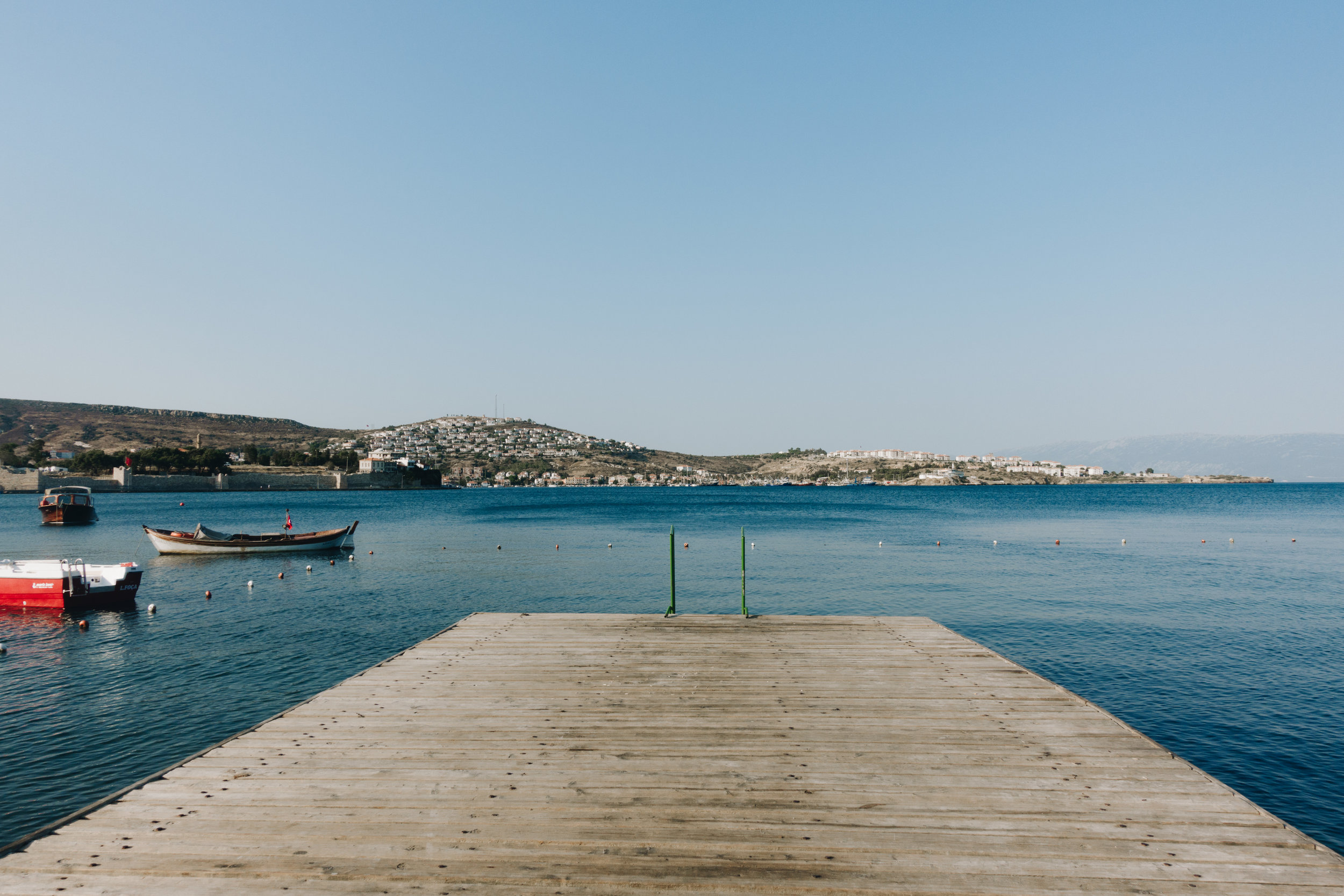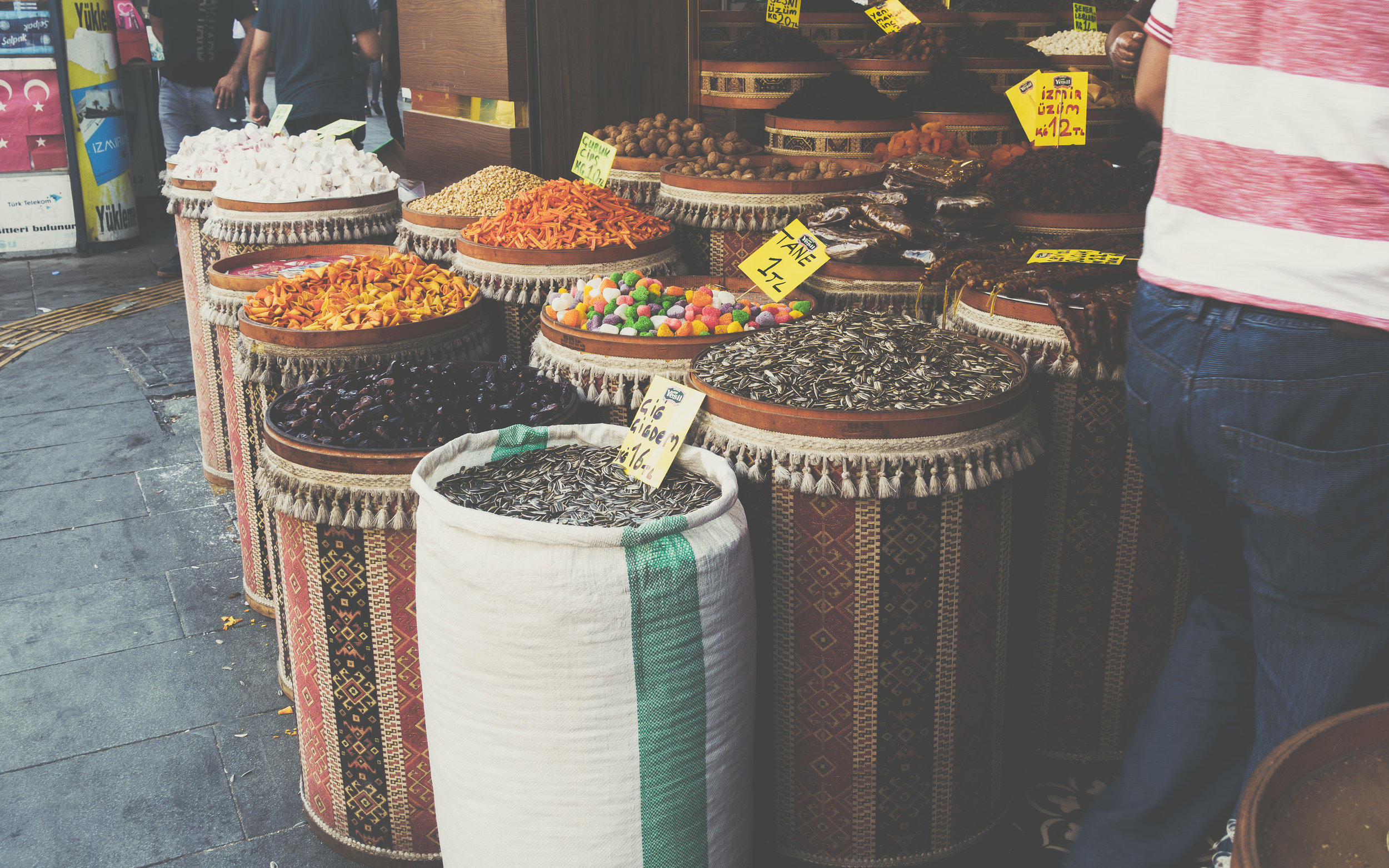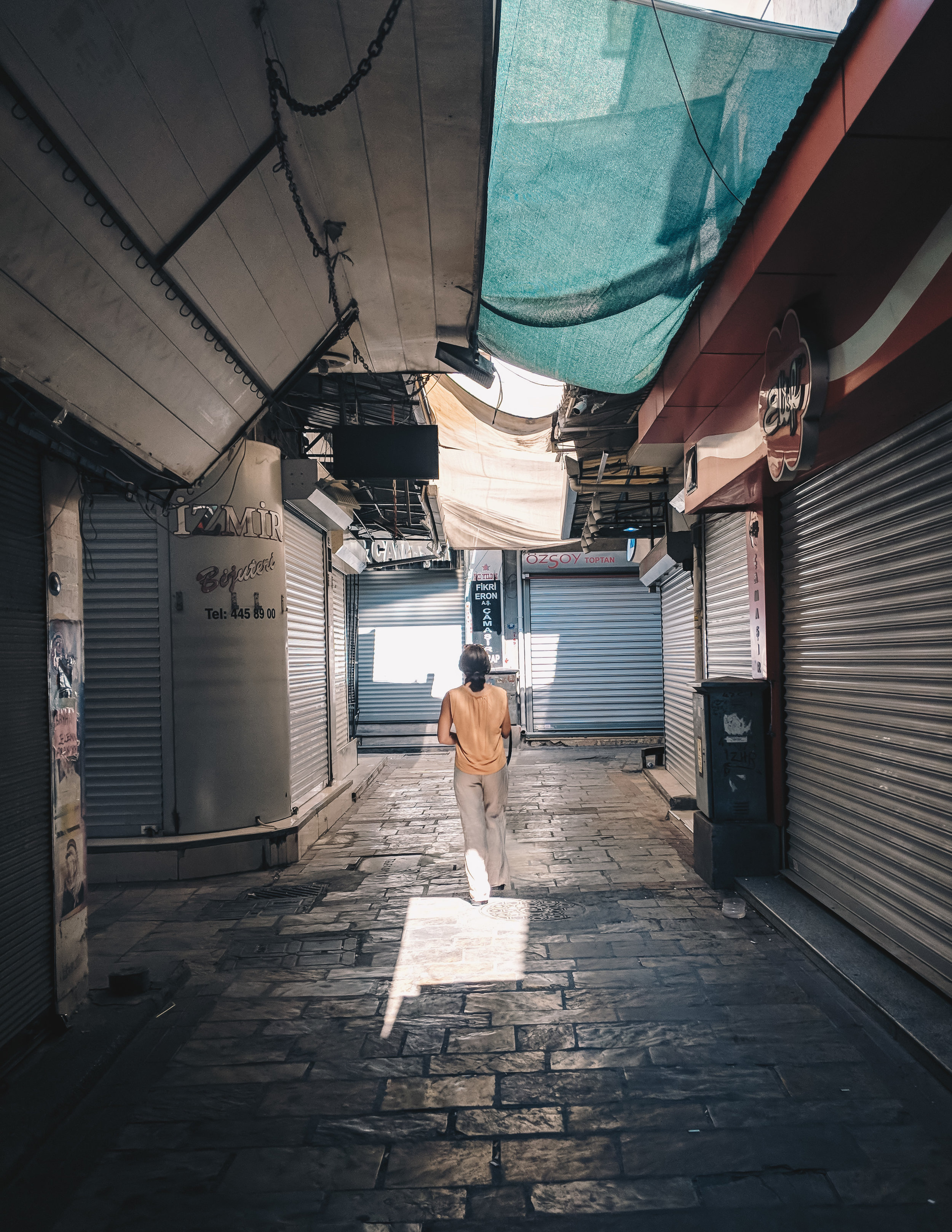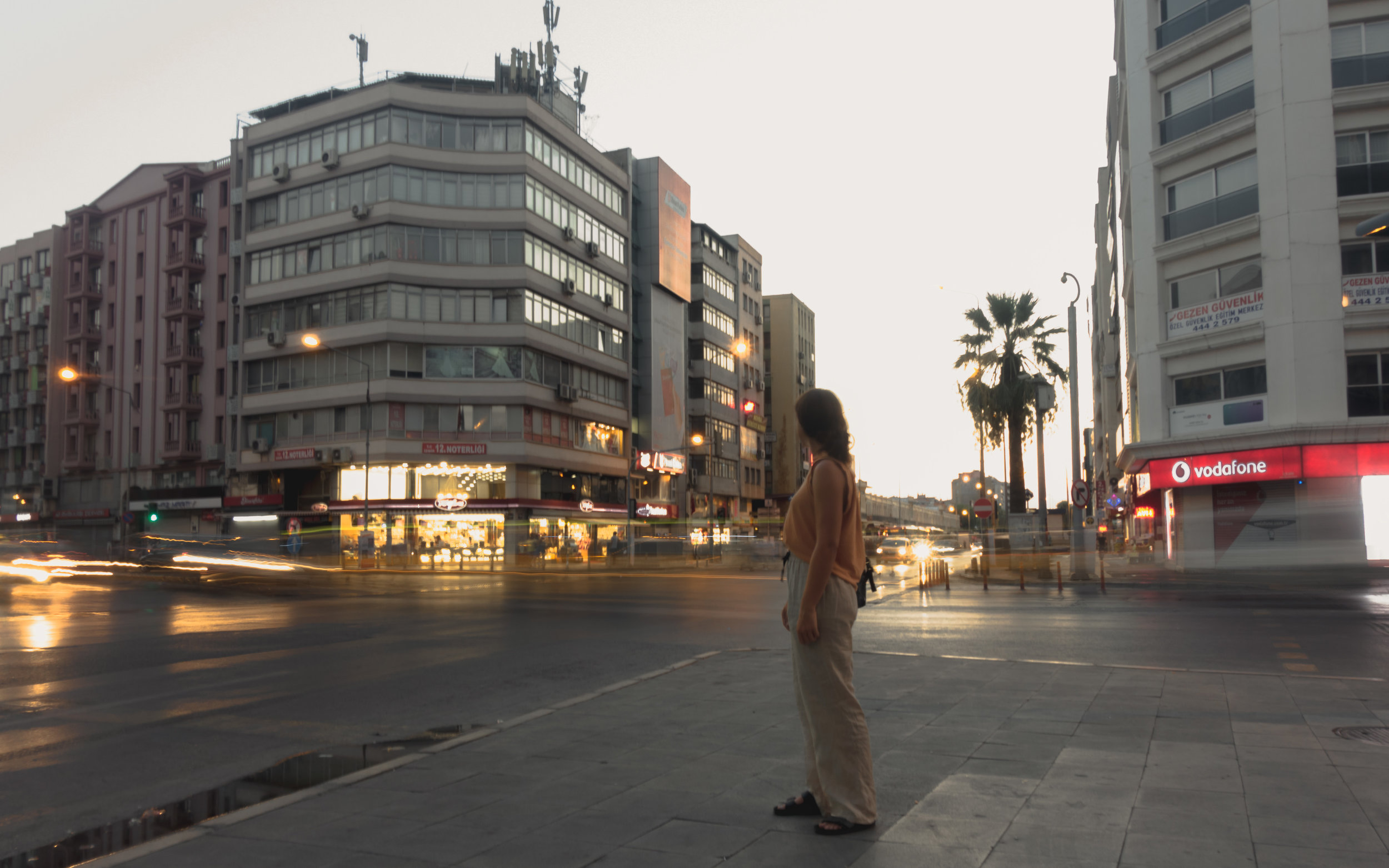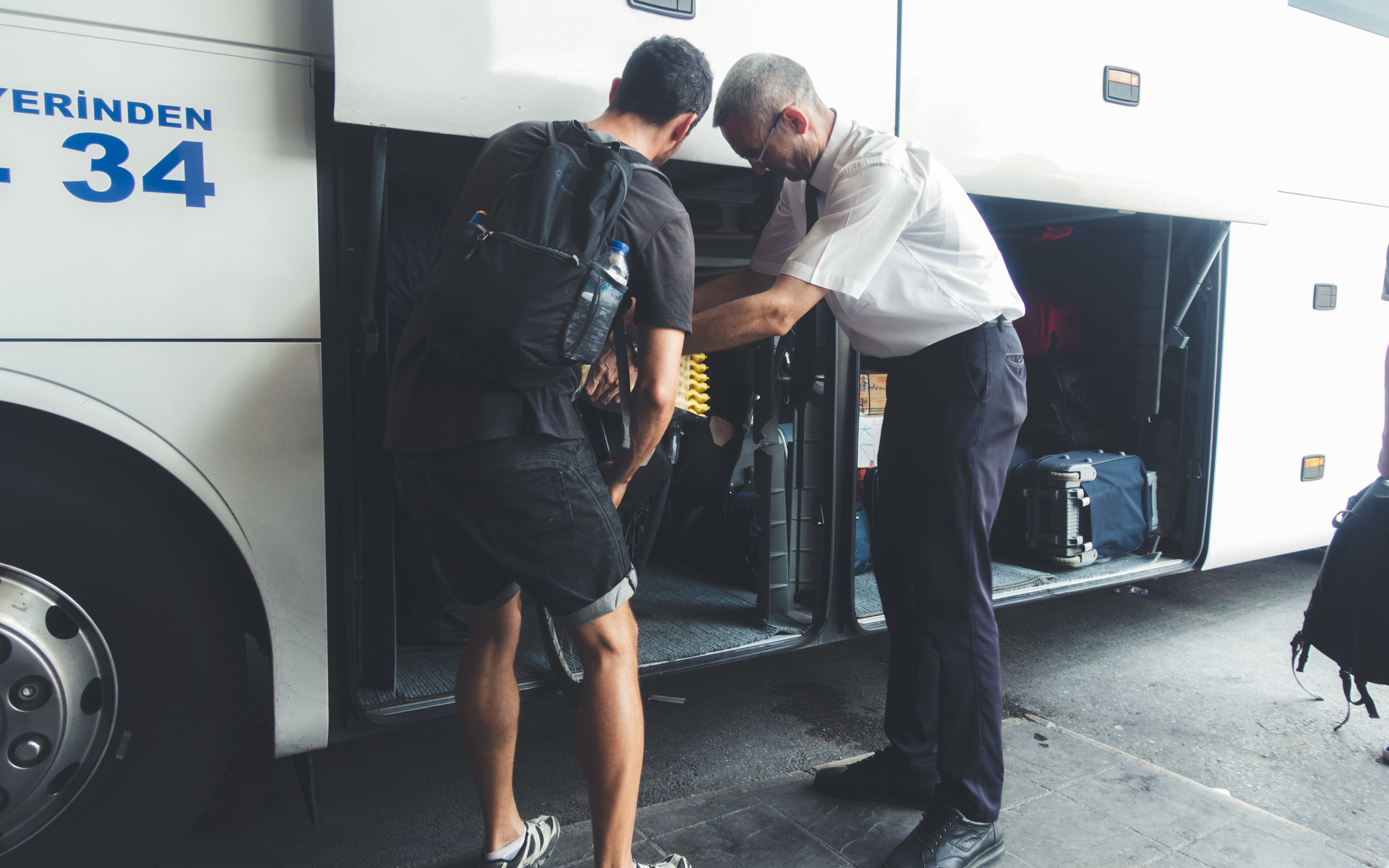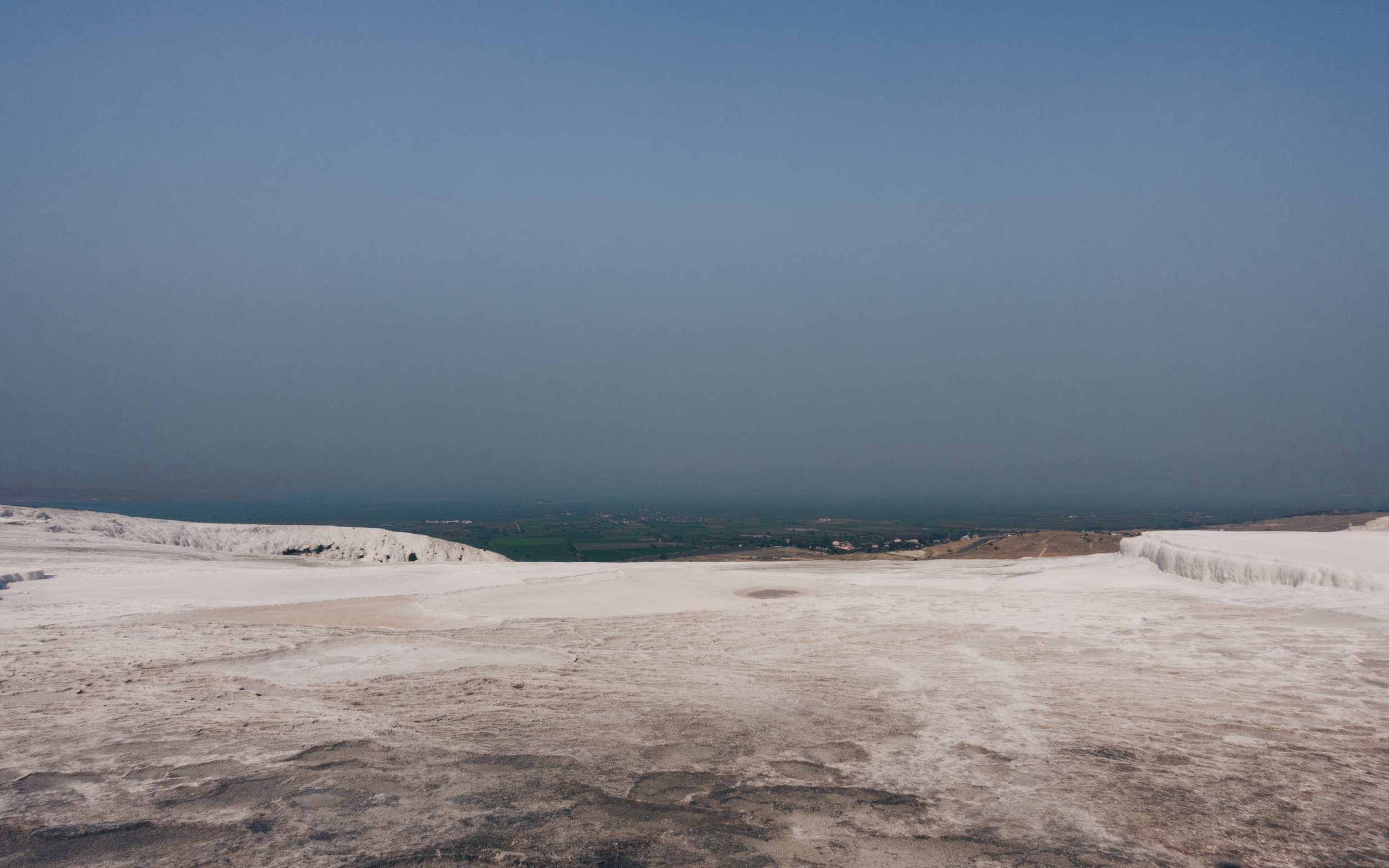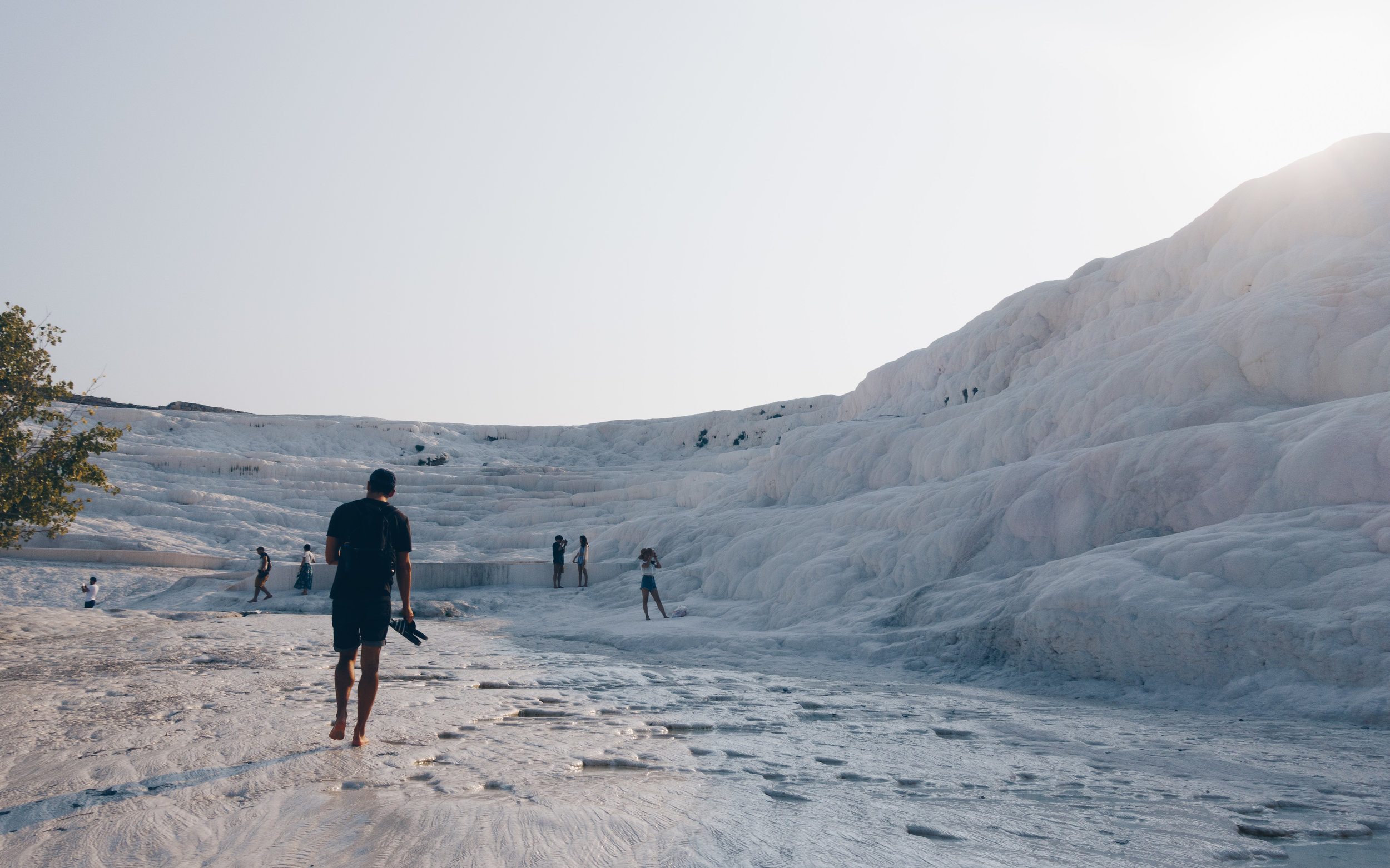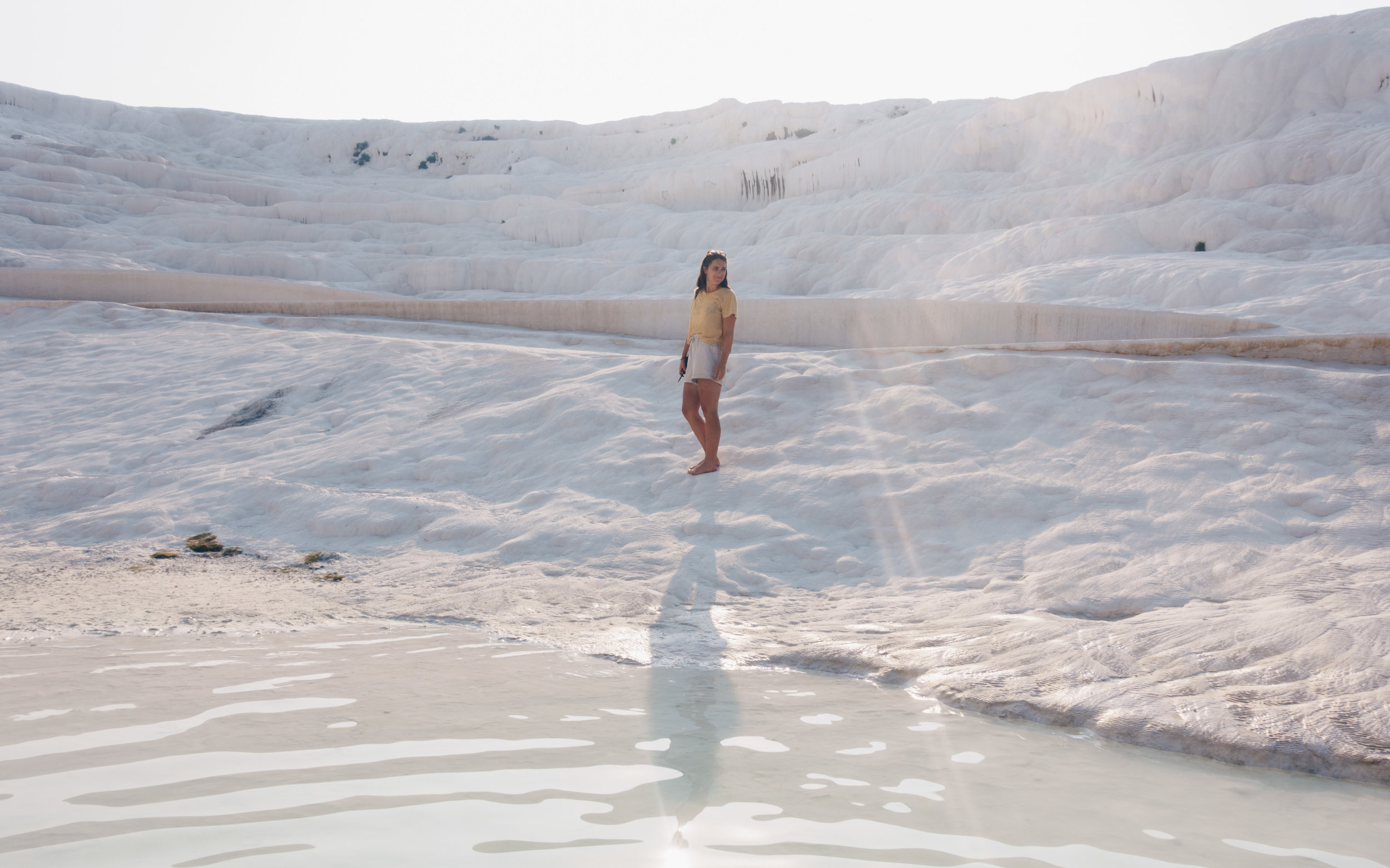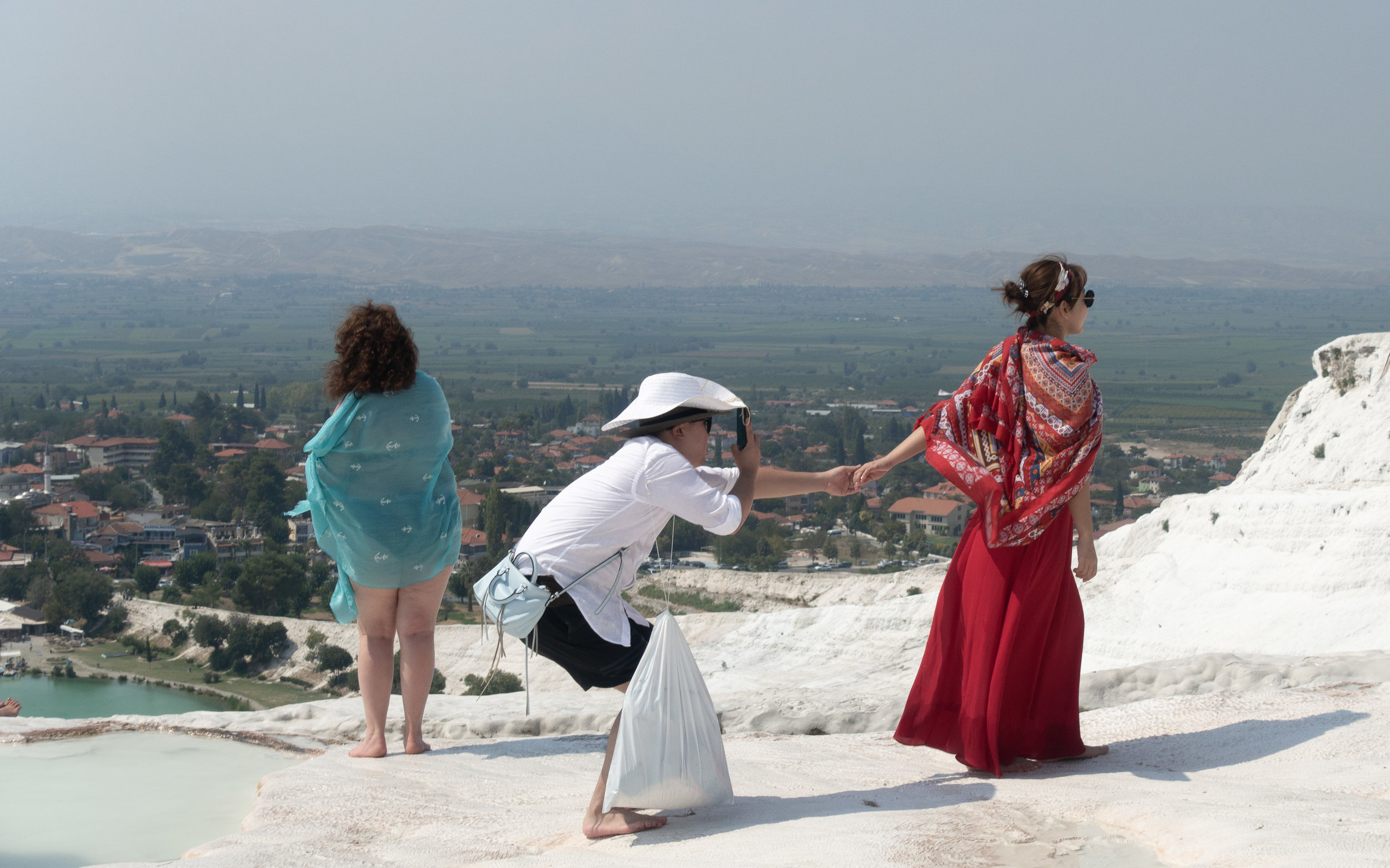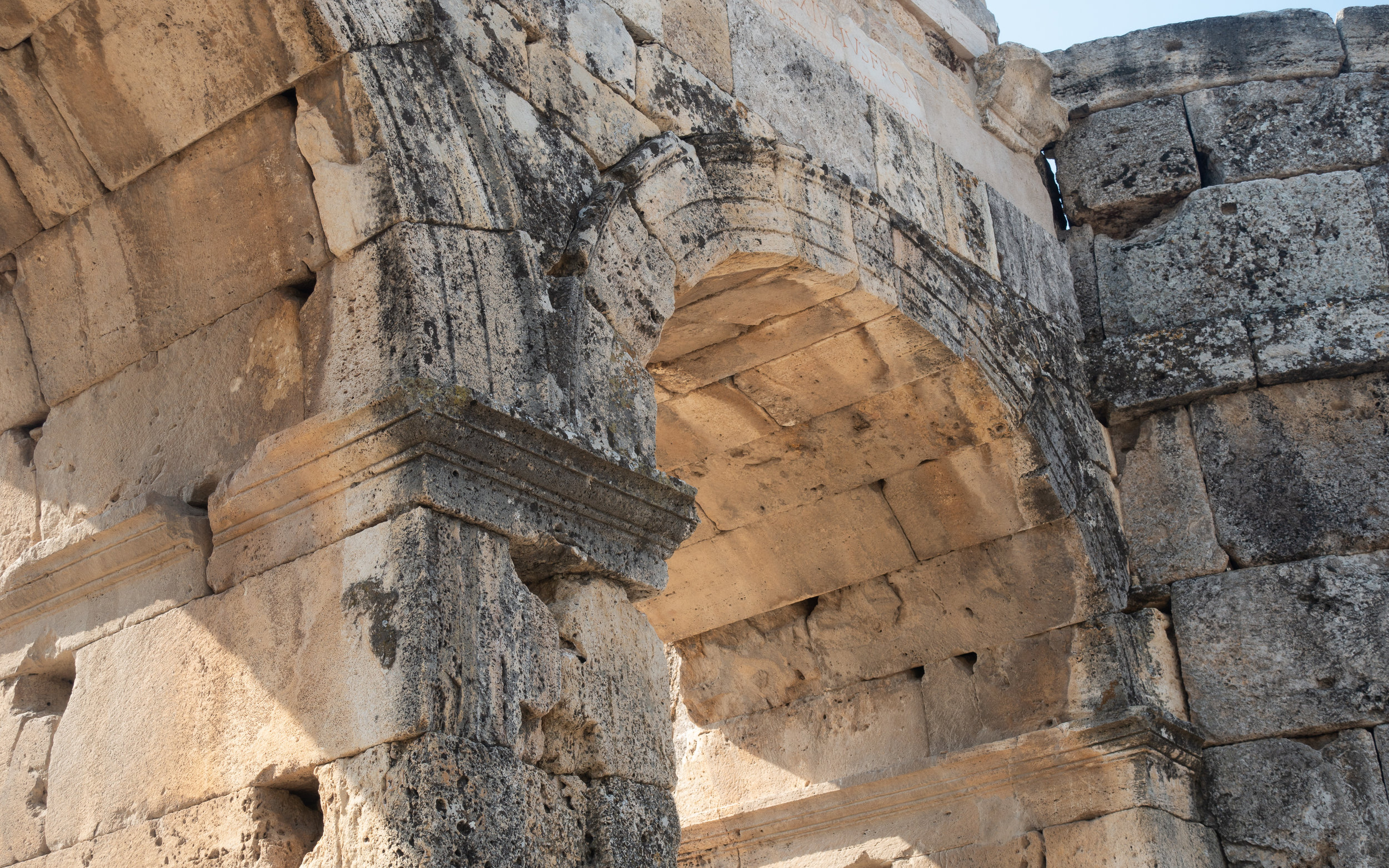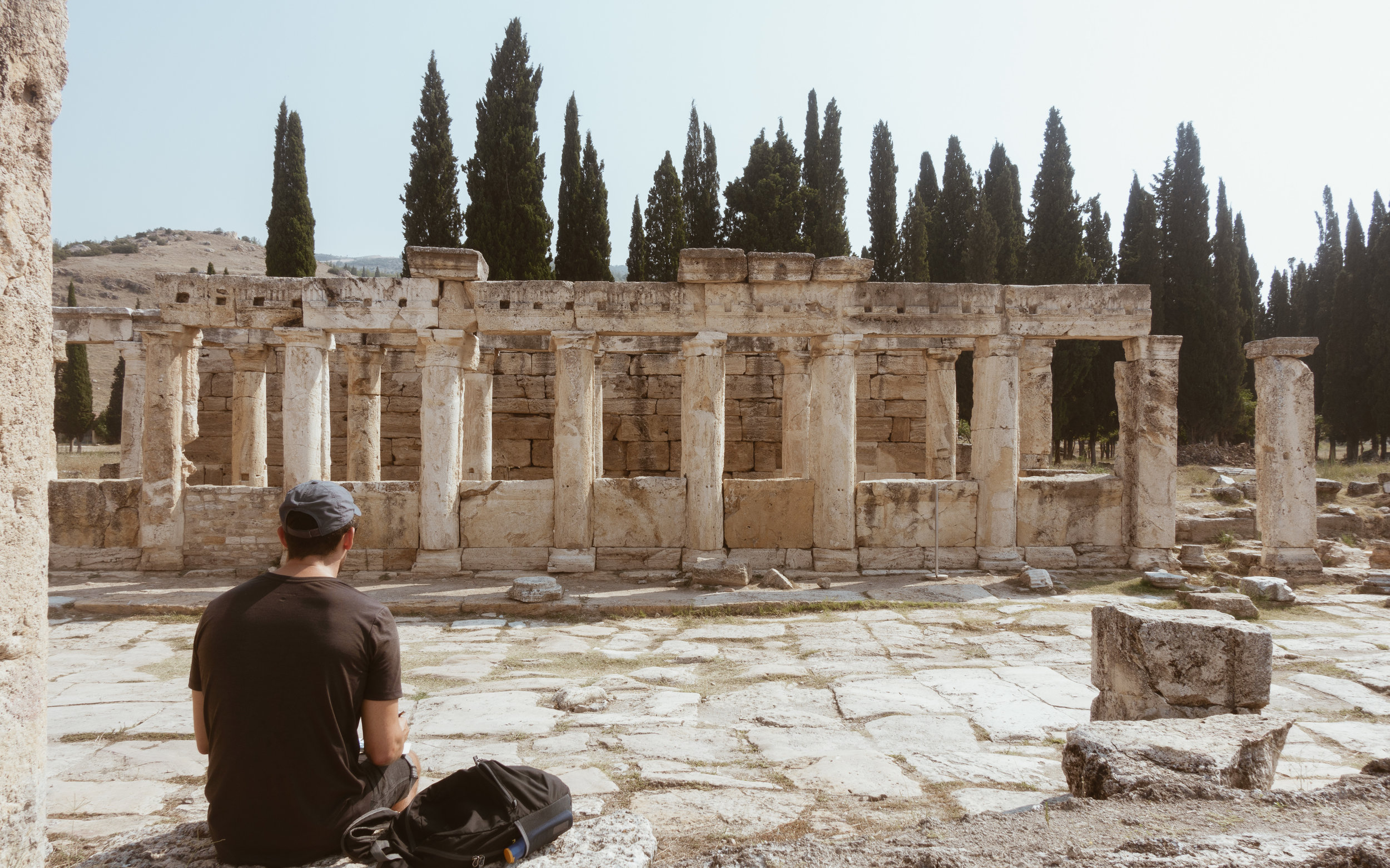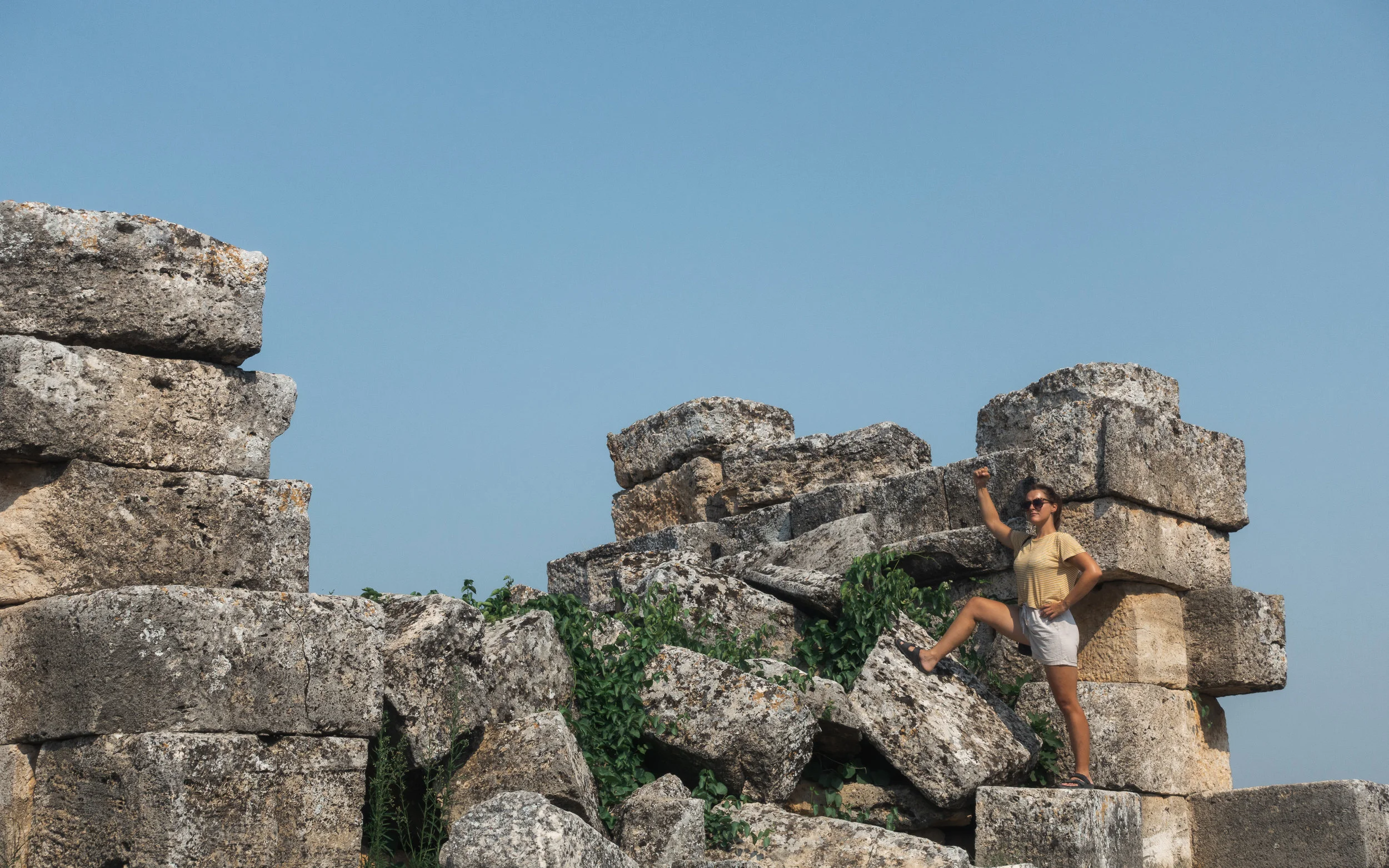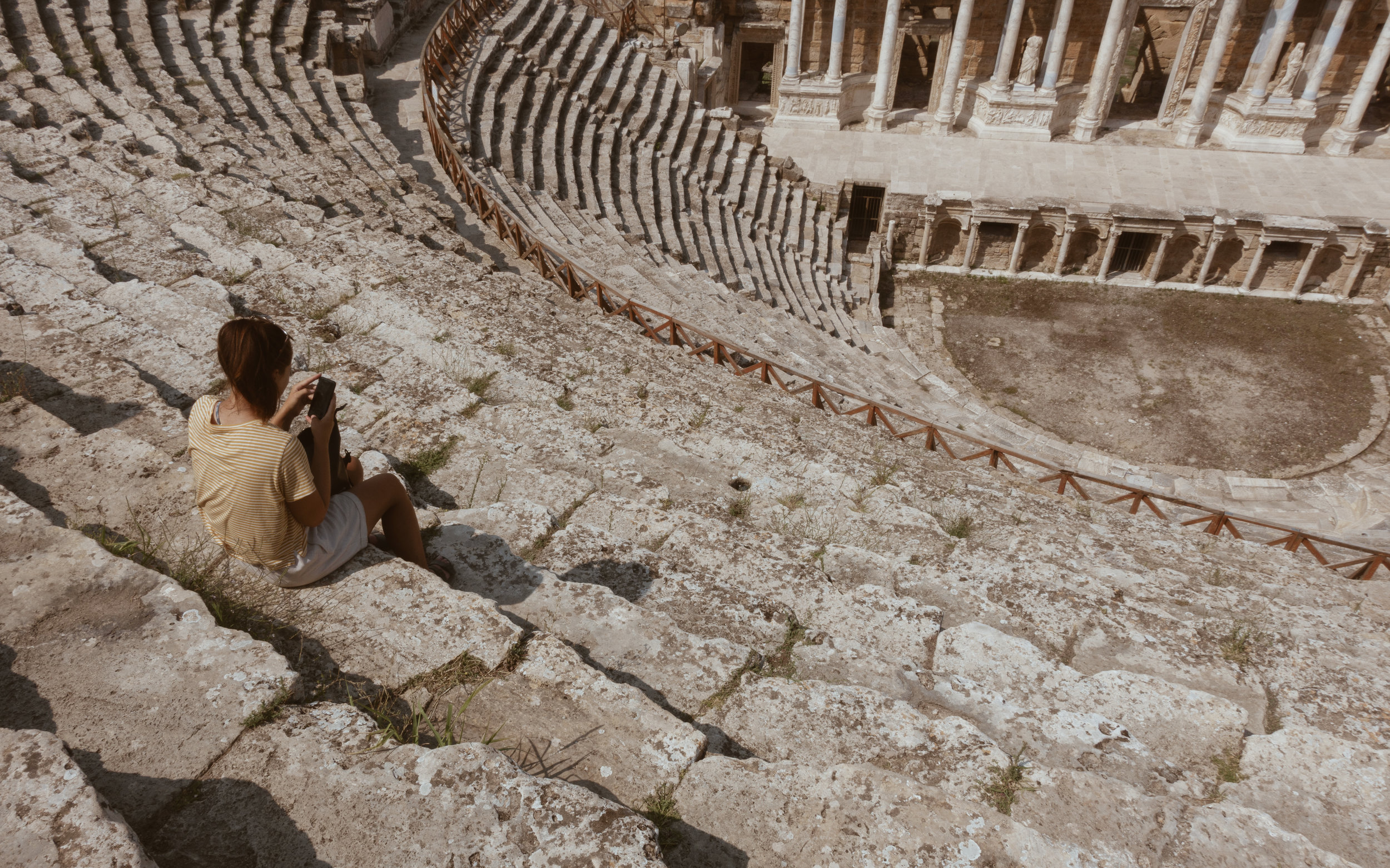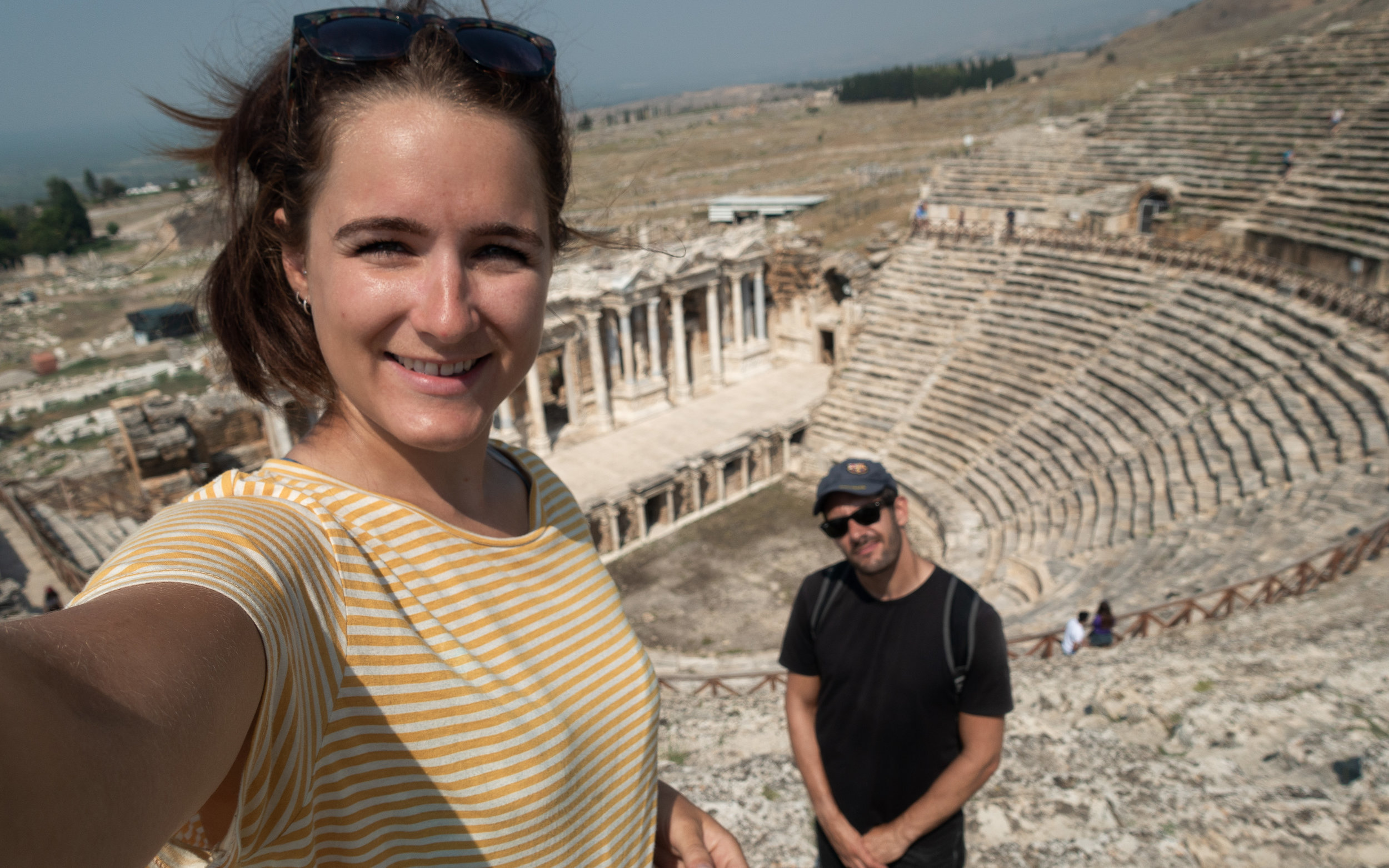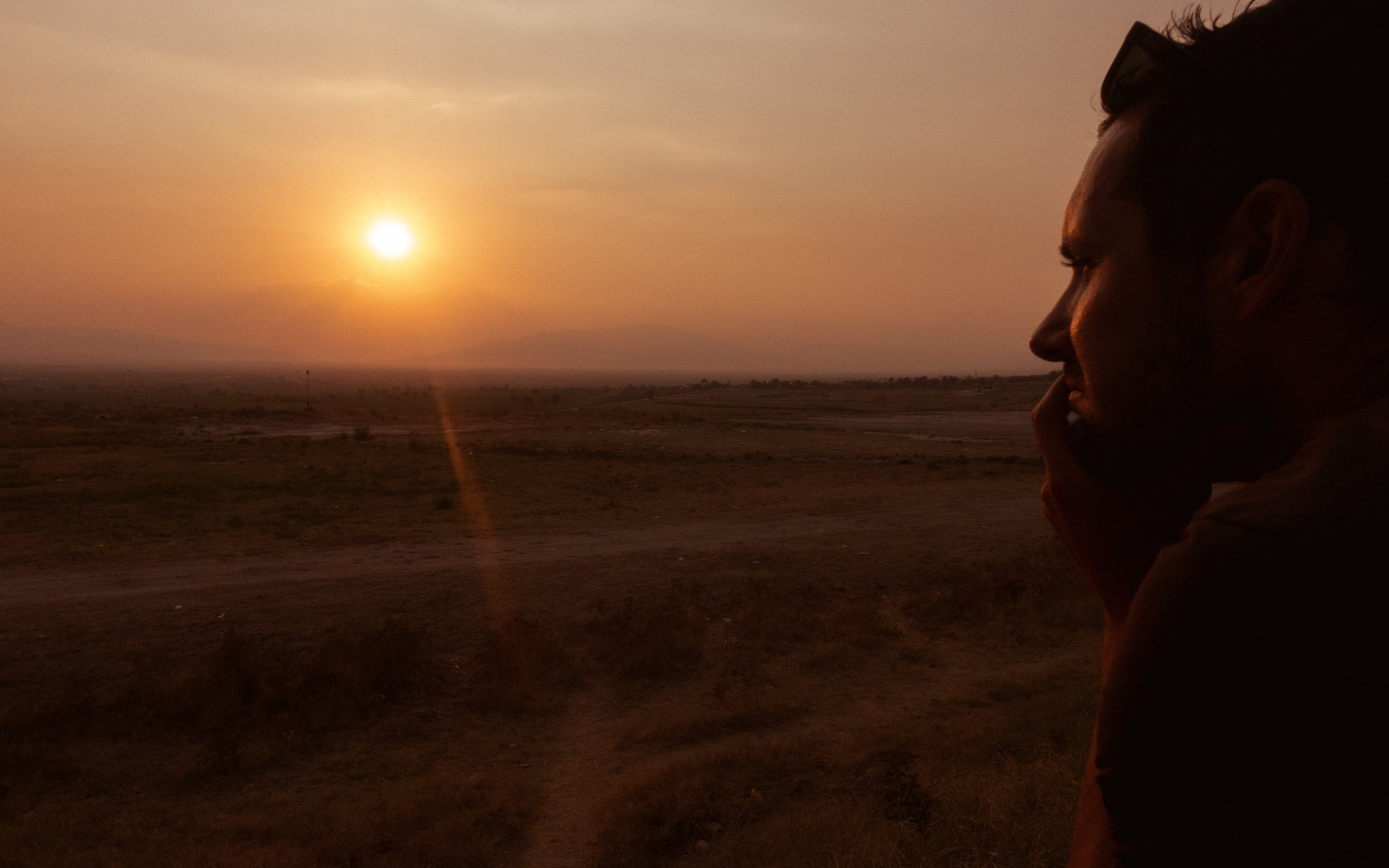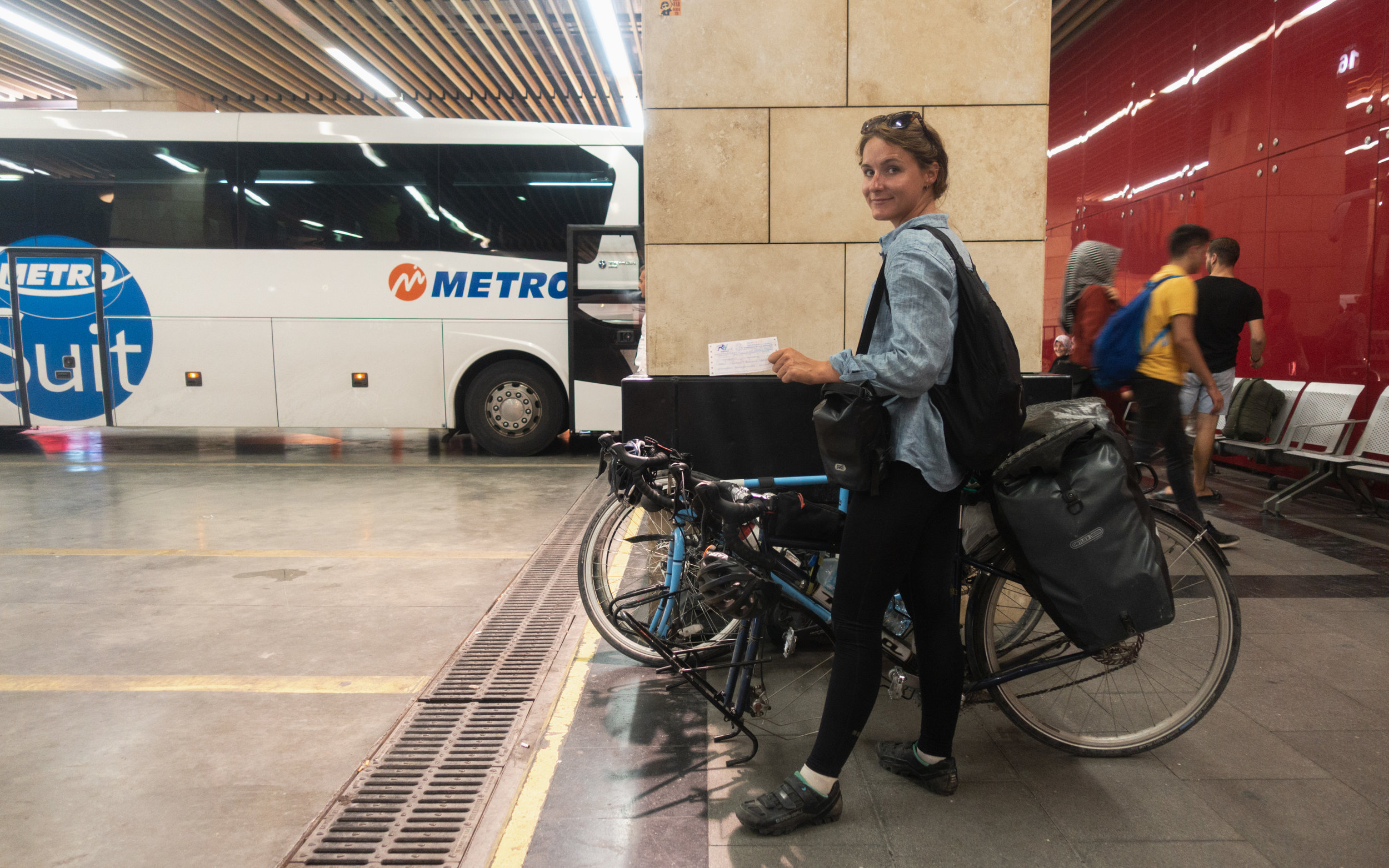This post covers our route from the Greece-Turkey border down the Aegean coast to Izmir, which we undertook in mid-August. We cover our journey through Middle and Eastern Turkey in our blog post here.
SUMMARY
Turkey is a real highlight for us and our only regret is that we didn’t have more time here. The scenery is what makes cycling a pleasure here; the people are what make it difficult to leave. We were warned of the drivers and dogs in Turkey - don’t believe the hype. We experienced courteous drivers and docile dogs during one of the busiest times of the year. The road conditions are mixed; main roads are mostly asphalt and coastal road are usually gravel tracks but most often good for cycling. The motorways, whilst less interesting and fast moving, provide a wide shoulder perfect for cycling and drivers give you plenty of room. The motorway petrol stations are a great resting place, with WCs, shade, grassed areas and a hot water cylinder for coffee and tea. The litter situation is quite shocking in places. Good tap water is harder to find on the coast, so we had to use our SteriPen or resort to purchasing bottled water. Buying a SIM card here is very simple - just remember to bring your passport.
STORY
The border crossing into Turkey from Greece is quite a drawn out and security-heavy affair. You have to pass many armed guards and numerous checkpoints before you’re officially through the gates. Thankfully on bicycles, you can pedal past the lengthy queues right to the front.
Meet Luis
We had barely cycled a kilometre down the motorway from the border when we saw a waving cyclist on the opposite side of the road. He jumped over the crash barrier to join us on our side, introducing himself as Luis from Spain. He Kindly gave us his Turkish SIM card, welcomed us to Turkey to the sound of gunshots (blank shots to scare off birds) and went back on his way. Shortly after we pulled off the motorway and continued through a number of poor rural villages. The road surfaces varied from asphalt to gravel tracks on undulating roads. We eventually made it to the coastal holiday town of Erikli, where we enjoyed our first cup of hot çay.
With that well-known feeling of self-consciousness in an unfamiliar country, we did what we usually do when looking for a place to sleep: we leapt at the sight of a campsite. We haggled the price at ‘Milk Beach’ and set up, where everyone else seemed to be staying in permanent canvas tents. We were positioned in the middle of the site (where all the paths apparently crossed) and felt like the main act of a bizarre circus show. Heading off early the next day, we passed numerous tents on the beach around the bay and made a pact to be braver when looking for a place to sleep for the night.
From Erikli, you can either take a main road south or the quieter coastal road. We decided to take the scenic route unsure of what the condition would be. Our gamble paid of, the gravel track was decent and the views out to sea were breathtaking. Towards the end of the track, the surface of a reconstructed road consisted of half-gravel/half-asphalt which really messed up the nerves in my hands. The road led us back on to the motorway and even though it was fairly busy (due to the holiday season), there was a large shoulder and the cars gave us lots of room.
Surprisingly pleasant coastal road
After stopping for a long break in the cushty service station, we managed to cover a good distance and chose to set up camp on the coast, just short of the ferry port. We boarded the boat to Çanakkale the next morning. The crew called us crazy when hearing we were cycling to Izmir (we didn’t tell them where we had cycled from). Pulling up to shore into our second continent, we felt triumphant. We had arrived in Asia!
Cannakale is a bustling town with a nice atmosphere. The old town on the sea front has lots of tea houses and shops, although restaurants don’t seem to be a thing. There tends to be more ‘fast food’ available but far better than the western take on fast food. We grabbed some çay and pastries at a cafe, before following the footsteps of locals into a heaving bakery where we were first introduced to ‘Pide’ - a flatbread with different fillings. This particular one tasted like a meat and potato pie, wrapped inside a warm, chewy dough. It was delicious and by far the best we tasted in Turkey.
Colourful Cannakale
After filling up on carbs, we continued on in the direction of Assos in order to have a rest day on the beach the following day. Heading slightly inland where most of the land was being cultivated, we struggled to find a place to camp. We settled on an olive grove just off the road, which we were pretty happy with. It wasn’t until early the next morning when we awoke to the sound of an engine getting increasingly louder that we started to panic. Matt saw a tractor spraying pesticides making its way up and down between the trees. We hurriedly pack away our things in record time. Ready to leave, I glanced down the line of trees and saw the farmer in the drivers seat, who turned his head at the same time. For a moment, we stared directly into each others eyes, before finding our way out of the grove and back onto the road. We stopped a few miles ahead to eat our breakfast and brush out teeth. What a wake up call!
Wild camping in an olive grove
In the town of Ezine, we picked up some börek from a local bakery. The Turkish version isn’t as crispy as the Serbian version, with more doughy layers and just as delicious. Locals purchase their pastries and carry them to a nearby tea house to have with a cup of çay and friends. We finish the morning in Assos on the coast, another popular beach town for locals. We expected to have to stay at an official campsite here as the whole beach is lined with accommodation, so we settled on a site with canvas tents and spend the rest of the day on the beach with the locals drinking Efes. The canvas tent proved to be a bad idea and we hardly slept due to severe winds. The next morning we headed off in the direction of Ayvalik, stopping for our regular börek and çay in the busy town of Küçükkuyu. It was here we noticed that locals eat pide with a pot of yoghurt drank straight from the container.
Canvas tents don’t like wind!
As we continued on our way, we experienced the most severe head wind that we have so far had to contend with. A policeman signalled to us on the road and handed us two cartons each of ice cold water, which we were very grateful for. Eventually we arrived tired and exhausted into Ayvalik where we had to resort yet again to a campsite. At only 55 Lira a night (less than £8), we couldn’t say no and the beach was really beautiful. Finding wild camp spots on the popular Aegean coastline proved more difficult than we had expected in the summer season. However, during our trip we have come to value good rest with upmost importance. So if within budget and if no other option is immediately available, a hot shower and a proper pitch with shade is invaluable after cycling a long way. In the morning we were given two cups of Turkish coffee by our neighbour - something that wouldn’t happen if we were wild camping in a remote spot!
The beautiful Aegean!
The next day we headed to Bademli where we would meet our Warmshowers host for the night, Metin. On the way we passed through the busy coastal town of Dikili. Matt was cycling in front of me when a man suddenly opened his car door and knocked Matt off his bike. Car door: 1, Matt: 0. The motorist looked apologetic but Matt was obviously angry and pretty embarrassed, so we grabbed the fallen panniers and cycled on, pulling in further down the road to check the damage. Luckily he got away with just a few scratches and a bruised ego. After arriving in Bademli, we dropped our things at Metin’s and spent a wonderful afternoon beach-hopping on the bikes. First we visited a campsite where our host worked and then we cycled to the beautiful Pissa beach for the sunset. After a few beers we cycled back to Metin’s place for homemade raki and pizza. It was a very memorable evening and we are extremely grateful to Metin and Warmshowers for these experiences.
Sunset at Pissa Beach. We don’t know the man on the far left.
Despite kindly offering for us to stay another night, we decided to head further south to another beach, partly to clear our fuzzy raki heads! We packed up our things and bid farewell to our generous host. The coastal path south from Bademli turned out to be a stunning day of cycling. We passed through the seaside town of Çandarli where we stopped for lunch, before continuing on through Aliağa and the old town of Yenifoça.
Aegean Coast, Turkey
We called it a day just outside of the town (after a 10% road back up the mountain) and found a secluded spot to camp with a beautiful sea view. A decent lay in the next morning (8am) is always confirmation of a perfect wild camp spot. We arrived in the beautiful Foça with the full day ahead of us, so we celebrated with Kahvalti, Turkish breakfast made up of cold meze, a boiled egg, olives, cheese, grapes, bread and infinite çay. The combination of salty cheese and honey is a serious food combination. Both the homemade peach and blackberry cinnamon jams were delicious. We were told that it was Kurban Bayramı or the Feast of the Sacrifice (a 4-day religious festival) so everywhere would be busy and accommodation fully booked. Luckily we found a ‘pensyion’ with an available room for a good price and again, a stunning sea view. We chose a lively fish restaurant in the evening for dinner, sat under a canopy of upturned umbrellas and small kittens curled up by our table.
View from our balcony!
The closed bazaar!
The next day we planned to get a boat to Izmir to get a different perspective of the Aegean on our final day spent on the coast before heading inland. Typically luck was not on our side and the religious festival altered the timetable. We headed to the port to catch the 10am ferry; it was then that we learned the only ferry to Izmir was at 7:30pm. As always with travelling you have to be flexible so we kept our cool and decided to cycle half the way and caught a local train for the last leg into the busy city centre.
The journey through the city to the hotel was where we had our first real experience of the infamous Turkish drivers. Lots of seemingly pointless beeping and cars completely ignoring the traffic light signals. The city was certainly quieter though due to the religious festival and many shops were in fact closed.
We spoke to a friendly Turkish man on the train who told us that locals often visit their families outside of the big cities during the holiday. We spent our time here wandering the city and catching up on admin before heading inland.
Unfortunately due to the religious festival, we don’t believe we experienced the city in its best light. With much of the bazaar closed and most locals out of town, the place seemed full of tourists and had less ‘heritage’ appeal than Istanbul. All in all, it was a good time for us to relax and plan the next few weeks ahead, whilst stocking up on bike parts at the only bike shop open. For more pictures of our time cycling along the Aegean, check out our album here. | B
_____________________________
Current Stats (as of 23.08.18):
Total days cycled: 73/81
Total rest days: 8
Total distance completed: 4,723 Km
Best food: Pide filled with meat and onion!
Biggest argument trigger: Entering a city (we call it ‘City Syndrome’)!

